LO VE
(NOT HATE)
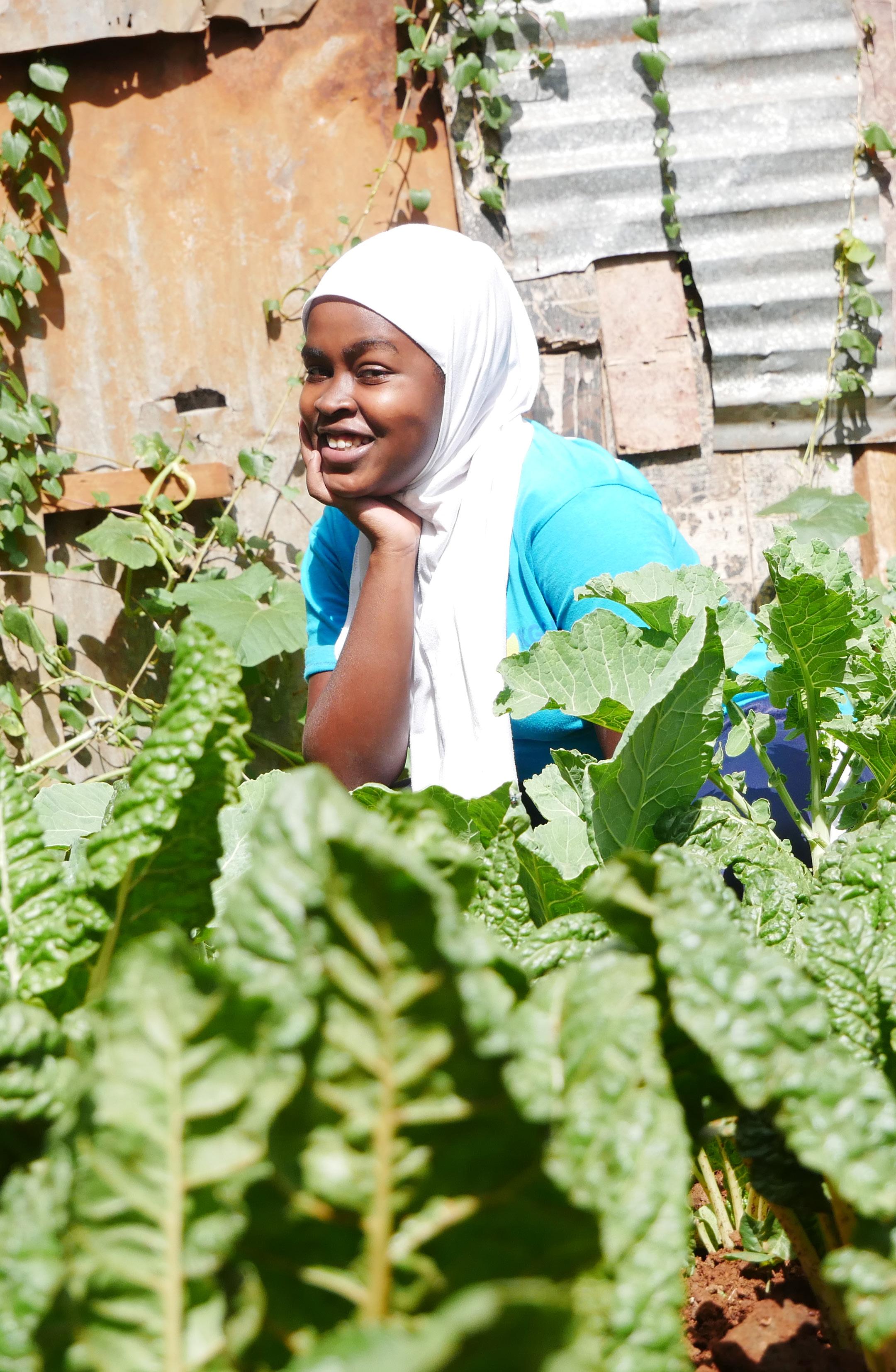
ISSUE 16 GLOBAL VANTAGE
Love is a conscious choice that requires us to open our hearts, to be vulnerable, and to choose to make a difference in the world. It is a choice that requires us to put aside our own selfish desires and instead focus on serving the needs of others. It is through this selfless act of love that we come together as one, regardless of our background, race, religion, or any other attribute that may otherwise divide us. Love is the cornerstone of community and the glue that binds us together, even in the face of adversity. When we choose love, we choose hope, and we choose to be a force for good in the world.
At the heart of Issue 16, we delve into the transformative power of love and its ability to conquer hate, bridging divides in our society. Through powerful testimonials, we highlight individuals and communities that have utilized the power of love to create meaningful and lasting change, igniting hope and inspiration. Alongside these inspiring stories, we provide actionable insights on how to nurture love in our daily lives and strengthen relationships.
Our goal is to remind readers that love is always possible and provide them with the tools they need to make the world a more loving place. Love knows no boundaries and knows no prejudice, so we urge readers to remember that every person is deserving of love. When we extend love and kindness to others, we inspire them to do the same, creating a positive chain reaction of love and kindness that will change the world. It is through this act of love that we begin to heal the wounds of our past, to reconcile with one another, and to build a future filled with hope and peace.
With the publication of Issue 16, Love (Not Hate), it is Global Vantage’s profound desire to let us choose love. To let us extend our hearts to one another, and let us work towards creating a world that is filled with love, compassion, and unity.
Editor’s Note
1 CONTENTS 2 POEMS & SHORT STORIES FROM KGSA 22 LOVE BEHIND THE YELLOW FILTER 26 EL PARQUE DE LA AMISTAD 32 WELCOMING AN AFGHAN REFUGEE FAMILY 38 MOMENTS IN PERU 44 A NEW PERSPECTIVE 54 SERVICE SPOTLIGHT 64 ON THE THEME 66 FINAL WORDS On the cover: A student sits in the garden at the Kibera Girls Soccer Academy (Kibera, Kenya). Story on pages 2-20.
Poems & Short Stories
GIRLS JUSTICE
Hi! I am Abigael Dete and this is my story.
In my country Kenya, mostly in the up country, we have so many vegetation growth unlike in towns where we find so many tall many buildings. The lack of electric poles has caused shameless men taking advantage of it by kidnapping innocent girls, violating them and to the extent of raping them. Such girls feel humiliated and end up killing themselves.
In my village the same thing happened, a 14 year old girl was raped by two men and left her in the bush while bleeding. Luckily she was found and taken to the hospital where she regained her memory, but she was pregnant. The girl felt like she was nothing and she went to an extent of killing herself. The case was reported to the police but nothing was done. And the painful part was that her parents could not do anything because of the poor background.
As a girl, I feel so insecure around my own country. A girl’s right is very crucial and should be protected with utmost security. There is a saying that says AS LONG AS WE HAVE GIRLS IN THE COUNTRY, I CAN SECURE OUR FUTURE.
 Abigael Dete
Abigael Dete
2

3
Stories
SALMA KULOLA
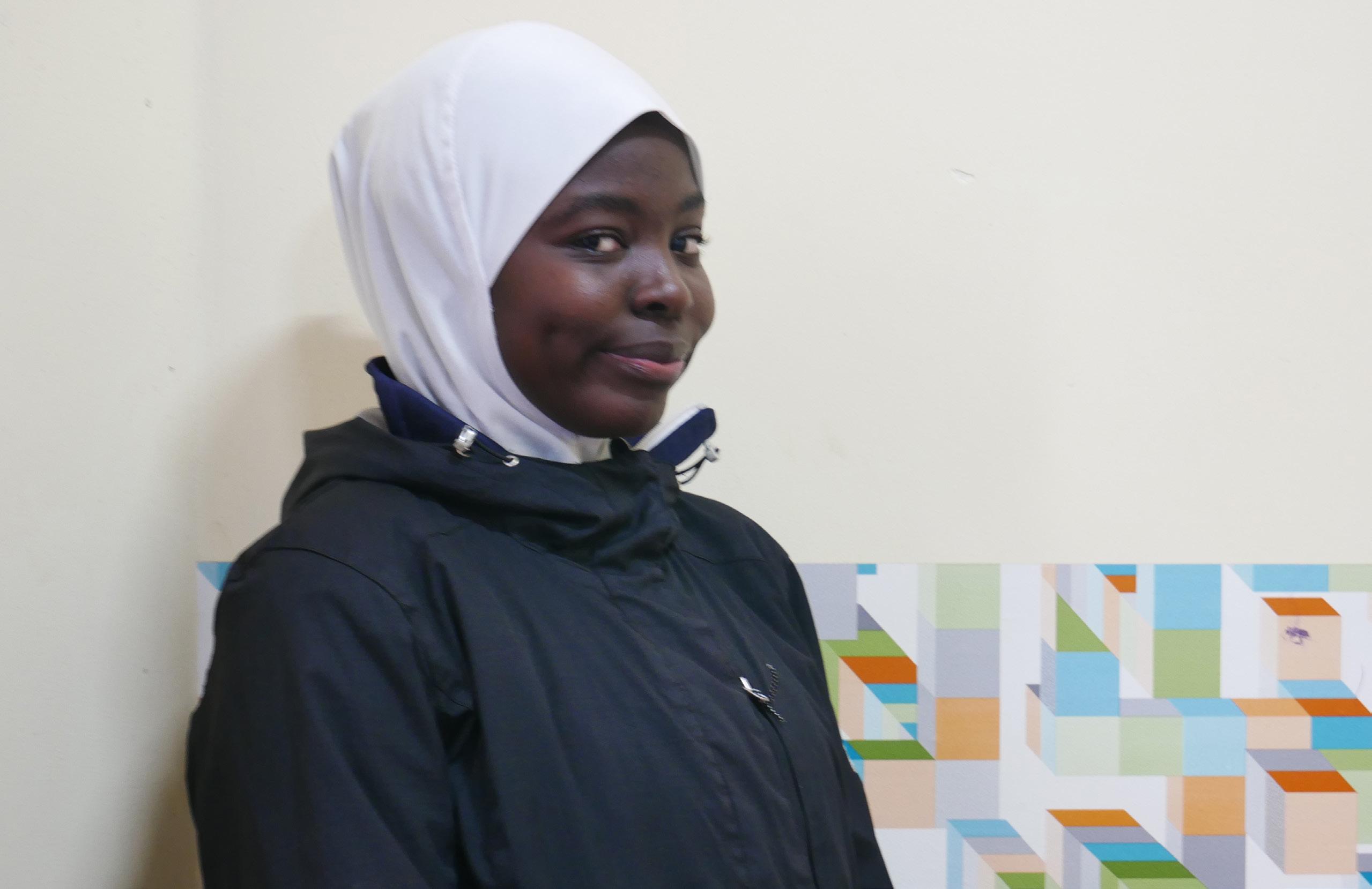
If life is too hard, fight it
If anger is awful, face it
If you are the best, accept it
If hatred is bad, dump it
Life is like a bicycle
To keep your balance
You must move forward
Mirror is my best friend cause when I cry it never laughs back
A wise person listens more
It’s never one’s fault to be born in a poor family, but it’s your fault for dreaming poor Silence can avoid many problems than laughing to every.
4
MERCY SANGITA
The whole purpose of education is to turn mirrors into windows. This poetic quote allows for a nice image to come to mind. The idea here is that, instead of looking at the whole world as a reflection of yourself and your own perspective being bounced back, education clears up the space to see past oneself as if they were looking through a window.
This is a quote that motivates me to work harder and harder to succeed in my education. Hope that it will motivate more than two people.
CYNTHIA BOSIBORO

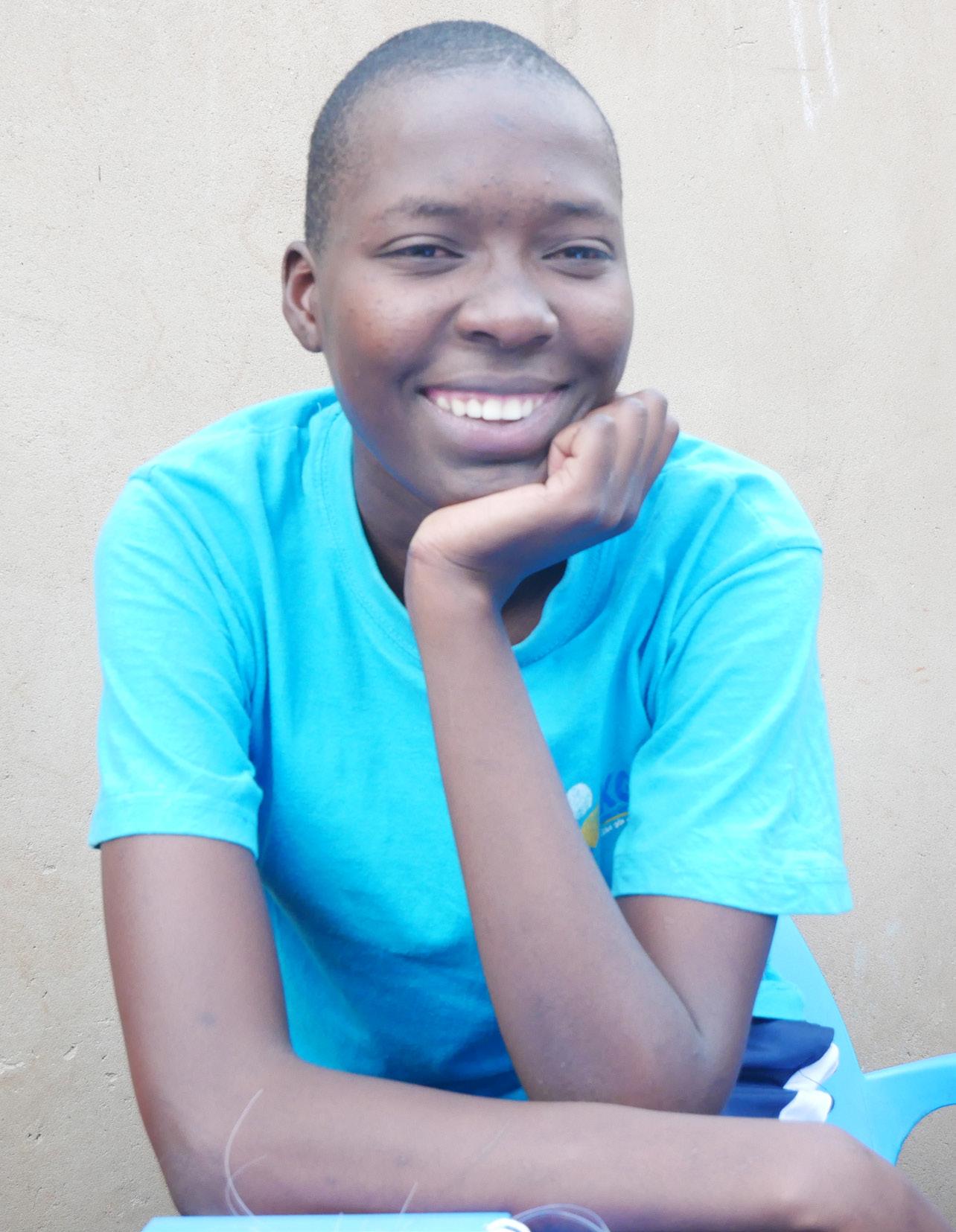
Success is not a matter of chance. It is a matter of choice that gives everybody a chance. Success is not final, failure is not fatal and it is the power to continue after defeat that matters.
They say time is money but I say it is timely intelligent management for excellence. Be under no illusion that you can kill it, rather, be conscious that no matter who we are, someday time will go on unperturbed without us.
CYNTHIA WANDERA
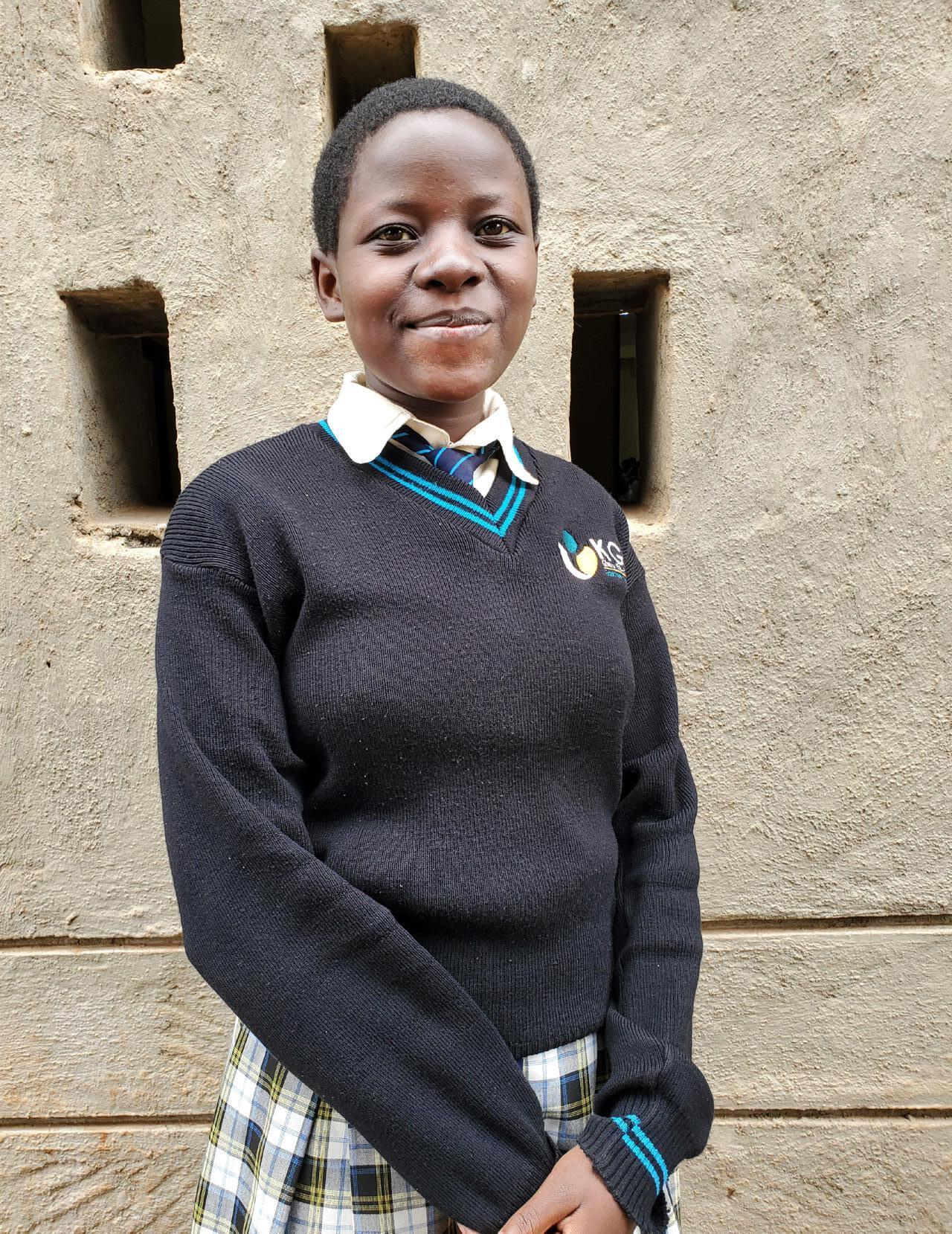

Education’s purpose is to replace an empty mind with an open one, no matter where you come from or how you see the world. One of the benefits of obtaining education will be that it will open your mind to new perspectives.
The only way to win the race is by forgetting all previous victories, which will give you false pride, and all former failures, which give you false fear. Remember that each race is a new beginning.
ANIMA MUSA
Golden tip
Read while others are sleeping
Believe while others are doubting
Save while others are wasting
6
NAIMA HASSAN
The School Librarian
First and foremost I would like to appreciate the Rotary Club for donating the new KLB syllabus book, not forgetting other individuals who donated other books.
Hi, my name is Naima Hassan, a 2016 year graduate volunteering as a librarian at KGSA. I enjoy interacting with the students when they come to pick books at the library. We recently moved to a bigger and more efficient library room. Initially, we stored books in boxes but now we are grateful for the study shelves that were built.
The library serves as discussion room or just an individual studies. We currently have a working system that is very manual but soon we will digitize the whole process. Students are allowed to borrow a maximum of 2 books to ensure they are used. All books are accessible to the students but we don’t encourage the lower classes to pick revision books. This is because we are encouraging them to read the available syllabus.
Books issued to students are recorded before leaving the library premise. The students have a grace period of two days to ensure there is no hoarding. Failure to return the books on the time results in punishment. I do audit before and after schools are closed and opened. Lost books are recorded for posterity and will be replaced later by the students who lost it.
We recently received 50 tablets from the world reader which was an amazing initiative. The tablets have ushered loads of book ranging from form 1 to form 4. I use the tablets to educate and inspire the students, since all the books uploaded on the tablets were carefully selected for the student’s growth. The library is English free zone, which in turn helps the students familiarize with it.
7
DOREEN ROSE
Never give up in life and commit yourself to education as you have in mind that you are the best.
The kind of situation such as trouble, poverty, and also suffering should not worry or hinder you from working hard towards achieving your goals.
Always put God first in whatever you do for he is the one who can change your life because sometimes you can work hard and not pass, keep struggling and also praying one day you will be successful.
Dear sisters, brothers and friends success doesn’t come on a silver plate for it comes through hard work, commitment and obeying those in authority. Respect for respect is very paramount.

8
KEISHA LOREEN
KING JESUS IN EDUCATION LIFE.

In Geography; he is the rock of ages.
In Home science; he washed the disciples’ feet.
In Chemistry; he changed water into wine.
In Biology; he raised the dead back to life.
In Mathematics; he balanced feeding 5000 people with 2 fish and 5 loaves.
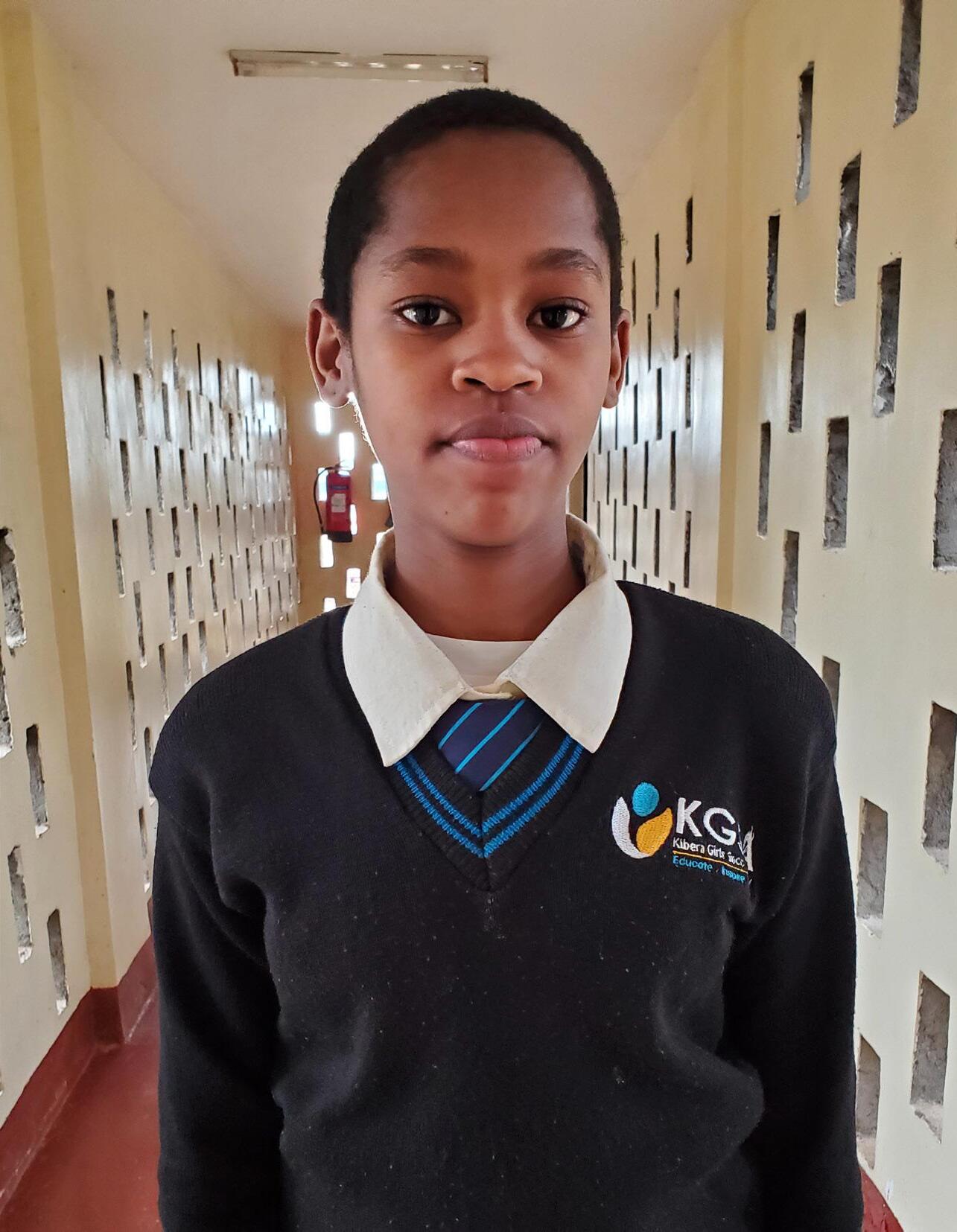
In English; he is wise.
In Physics; he ascended into heaven against the force of gravity.
In CRE; he is the best teacher in terms of parables.
In Business; he paid the temple tax.
NATASHA BLESSED
Take a struggle today, for a better tomorrow
You should work hard through life
No matter how tough the situation is, Always go forward never look back. Do not look at the struggles in life. Always take a step forward.
To reach for your dreams high on the shelf
But in doing so, always be true to yourself.
And never give up.
9
Catering Club

Tailoring Ankara Bags
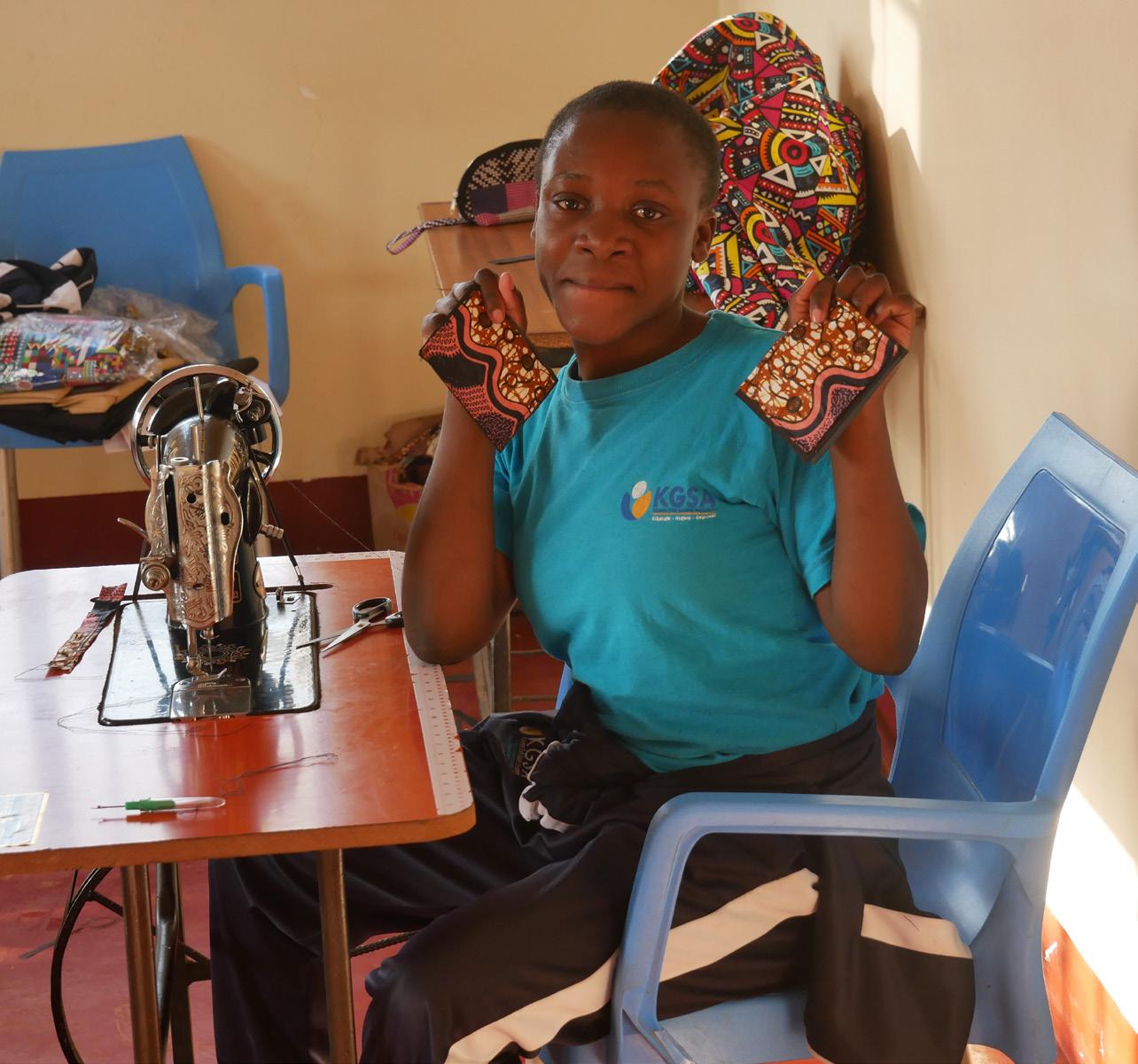
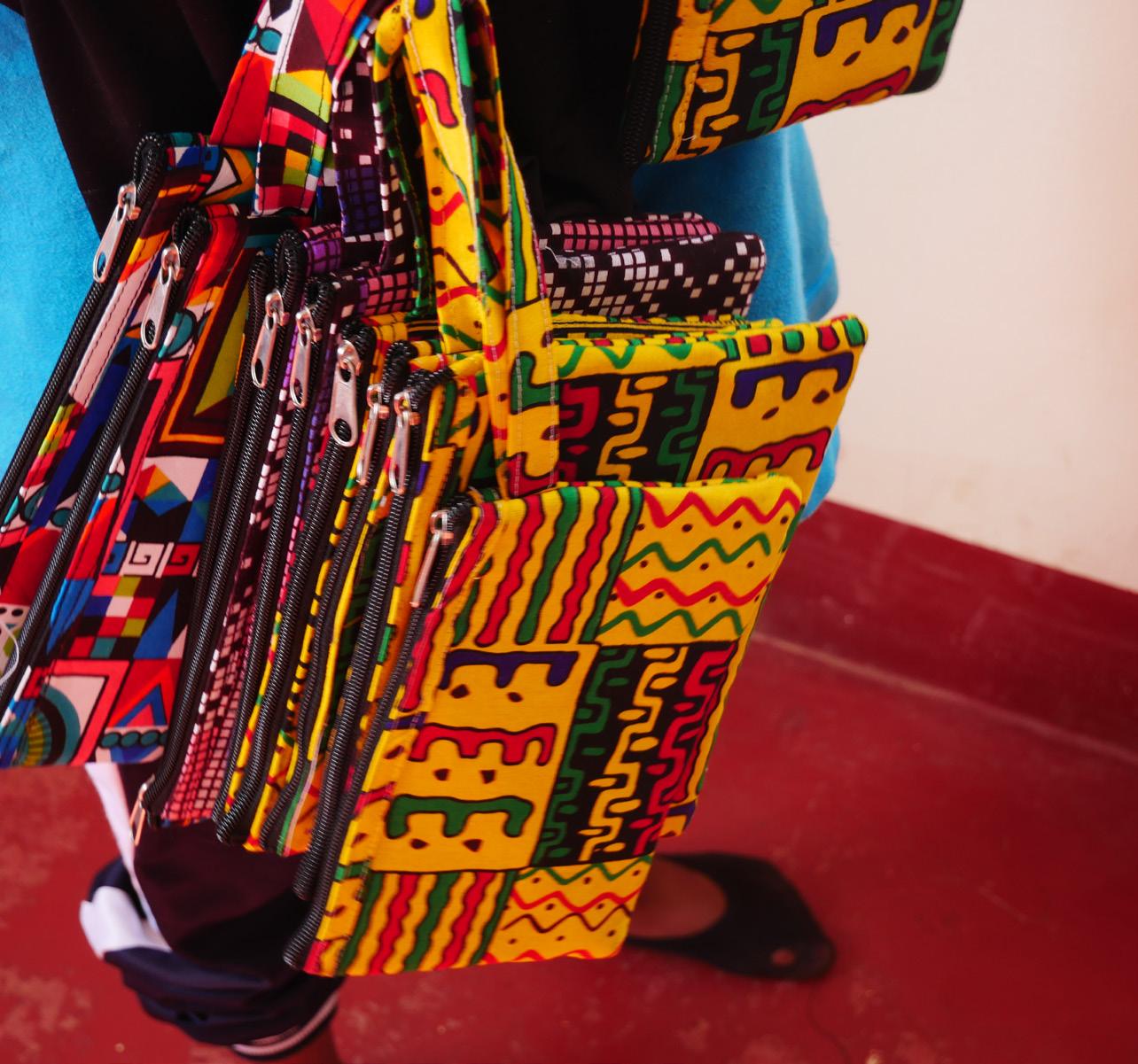
10
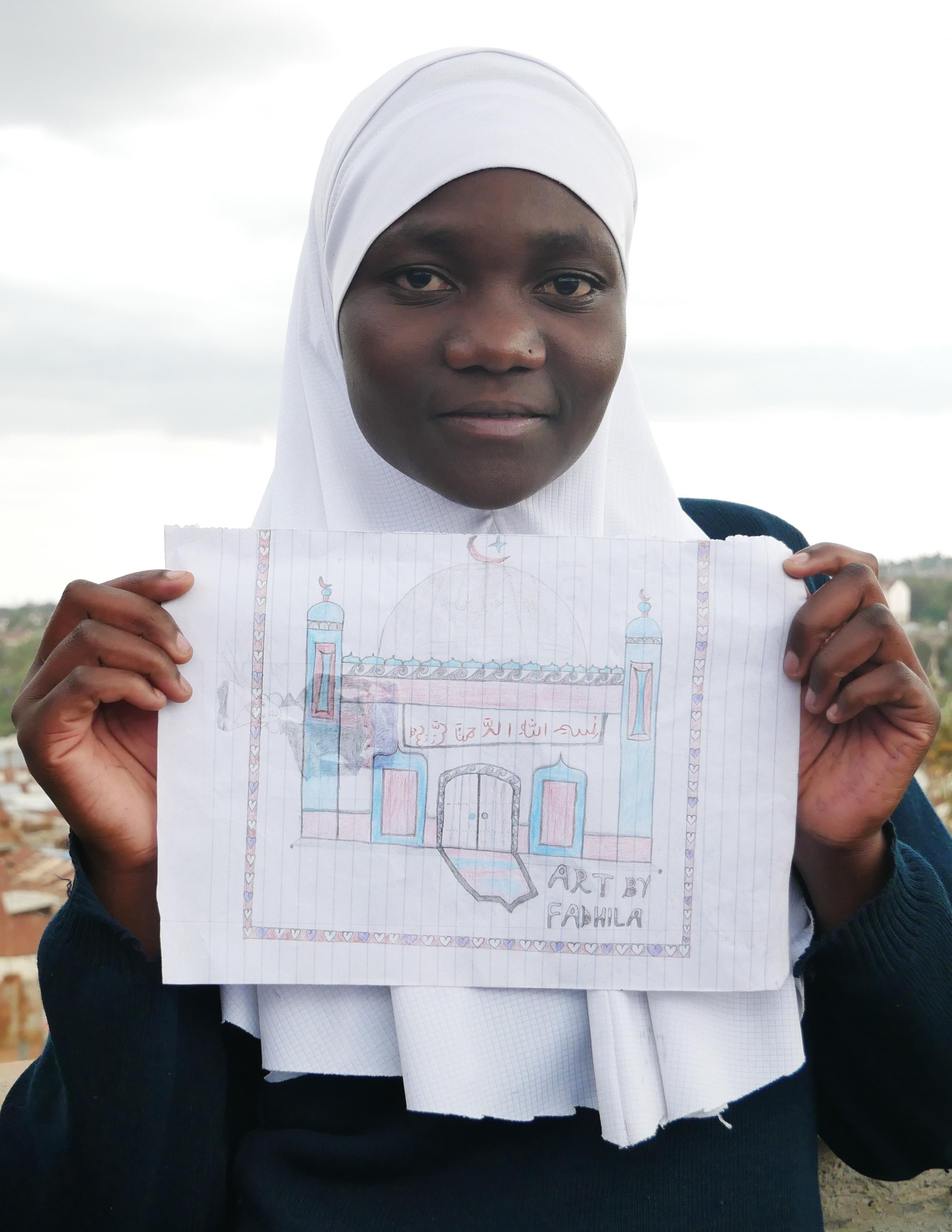
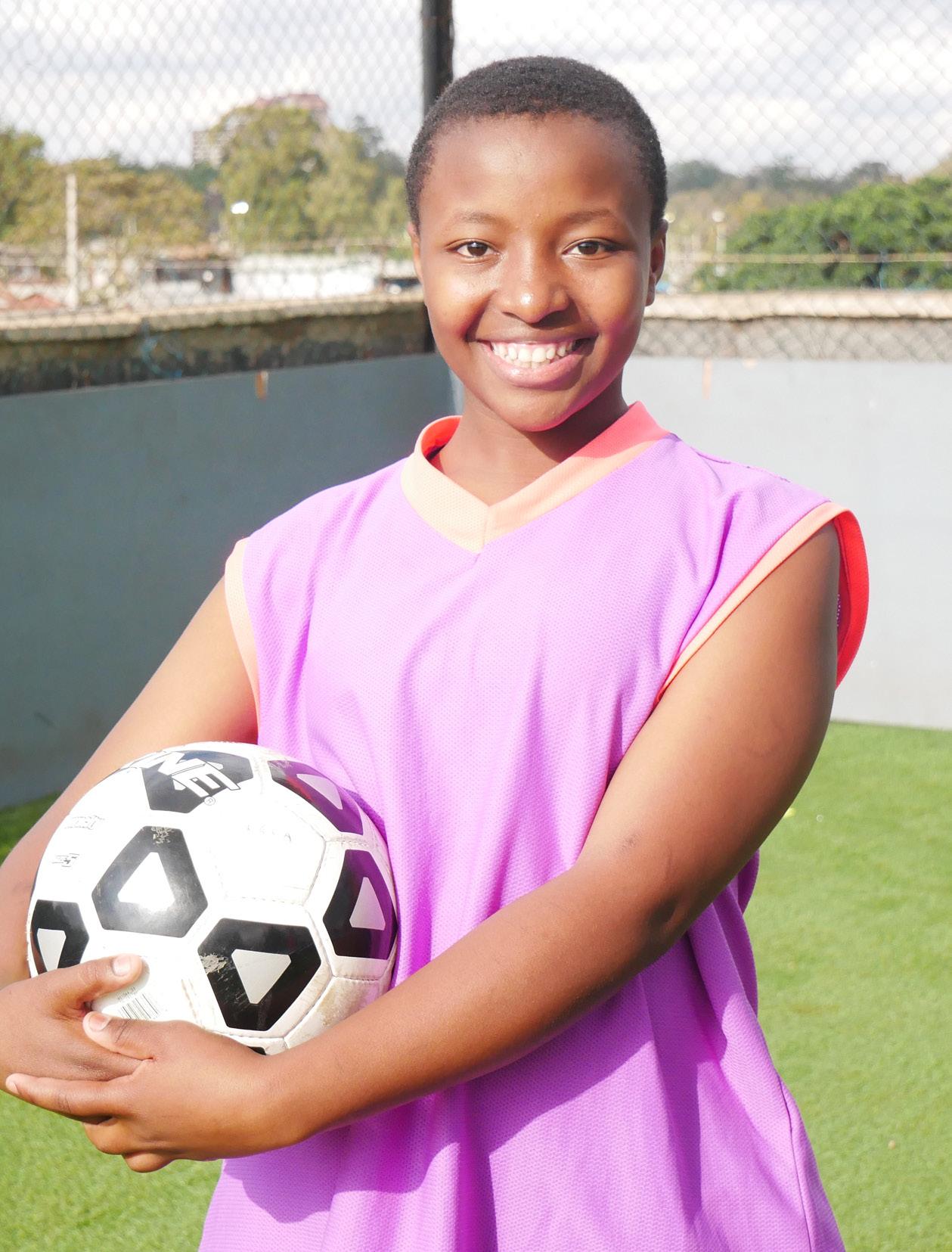

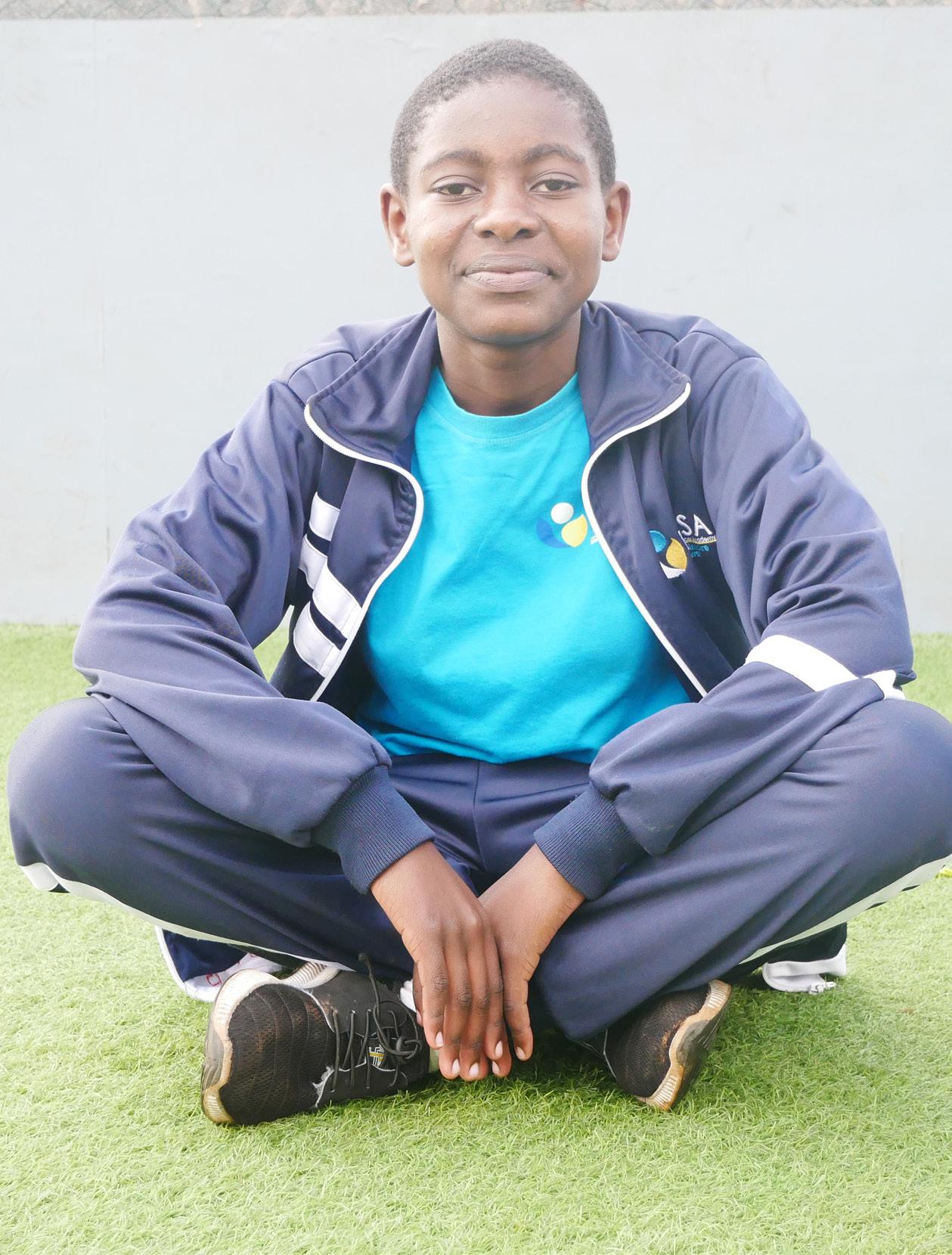 Striker Vinley Kanini
Striker Vinley Kanini
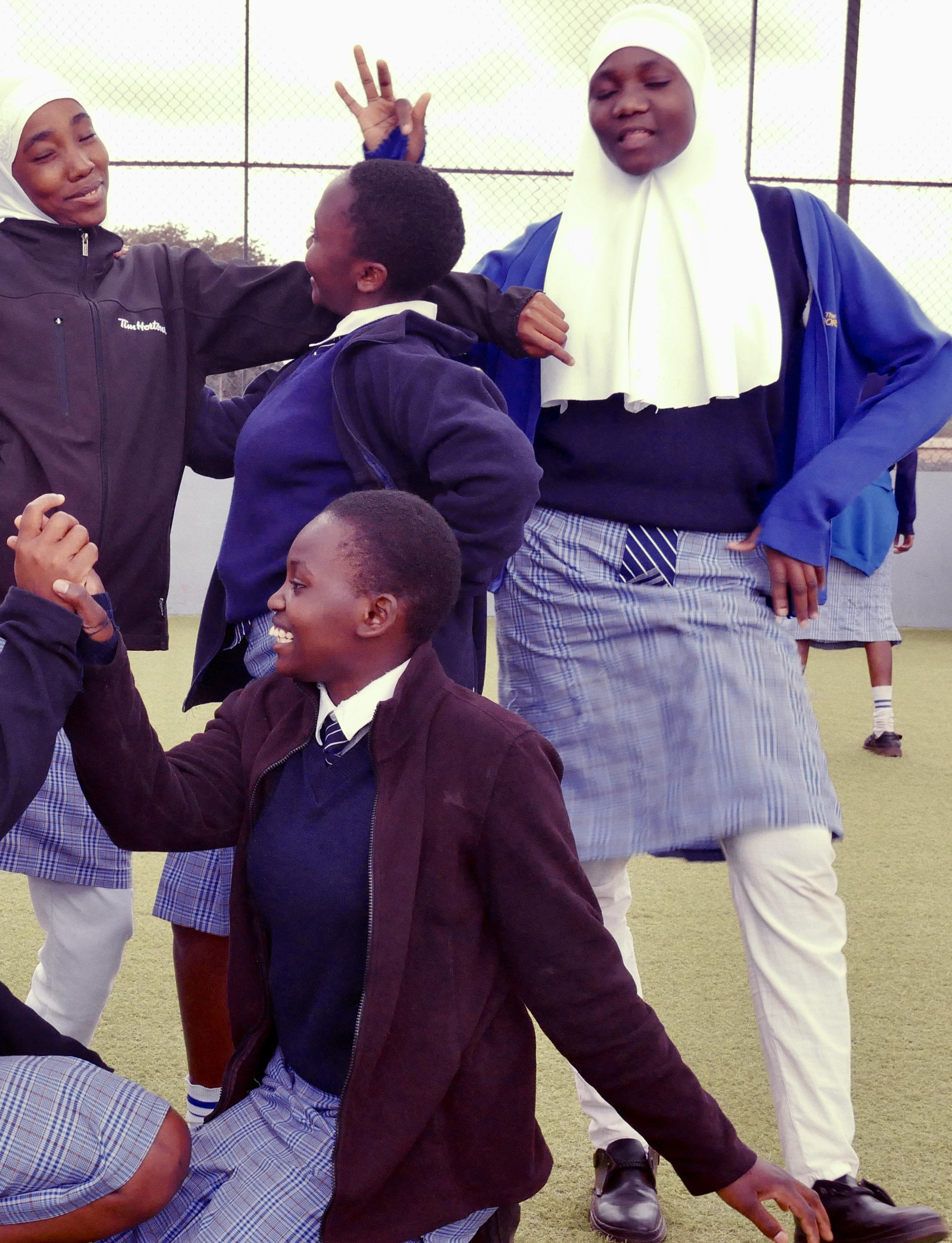
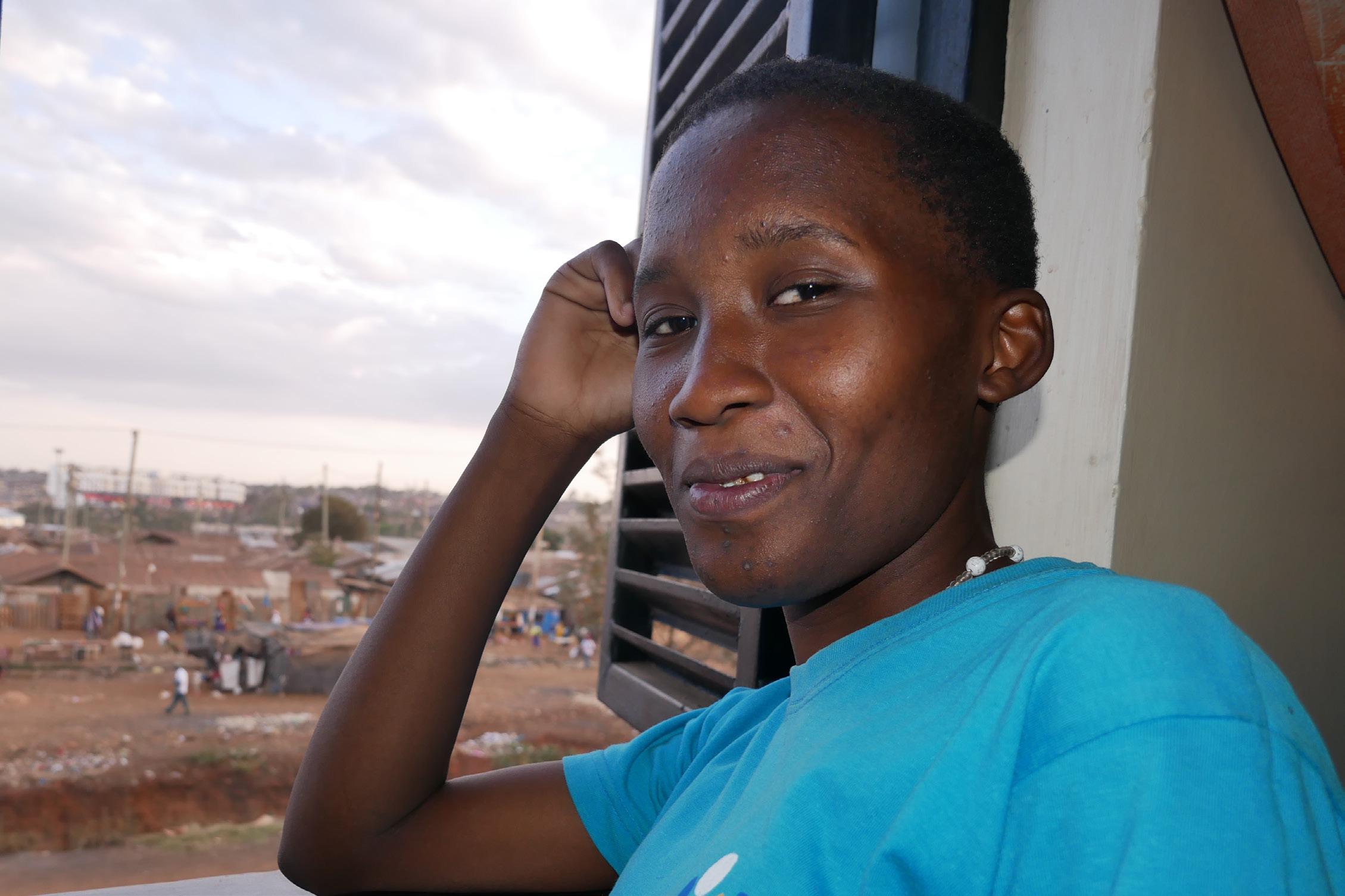
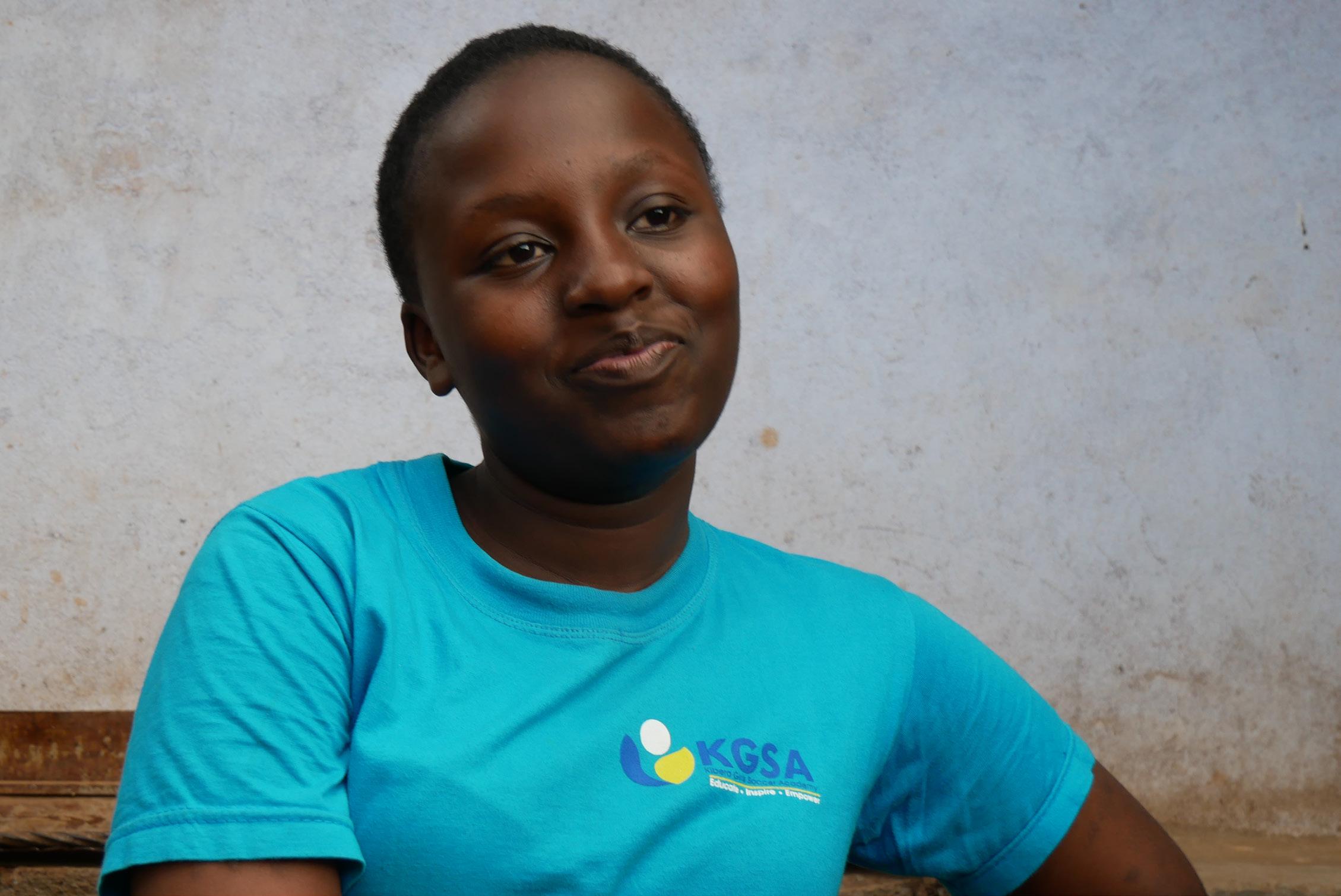

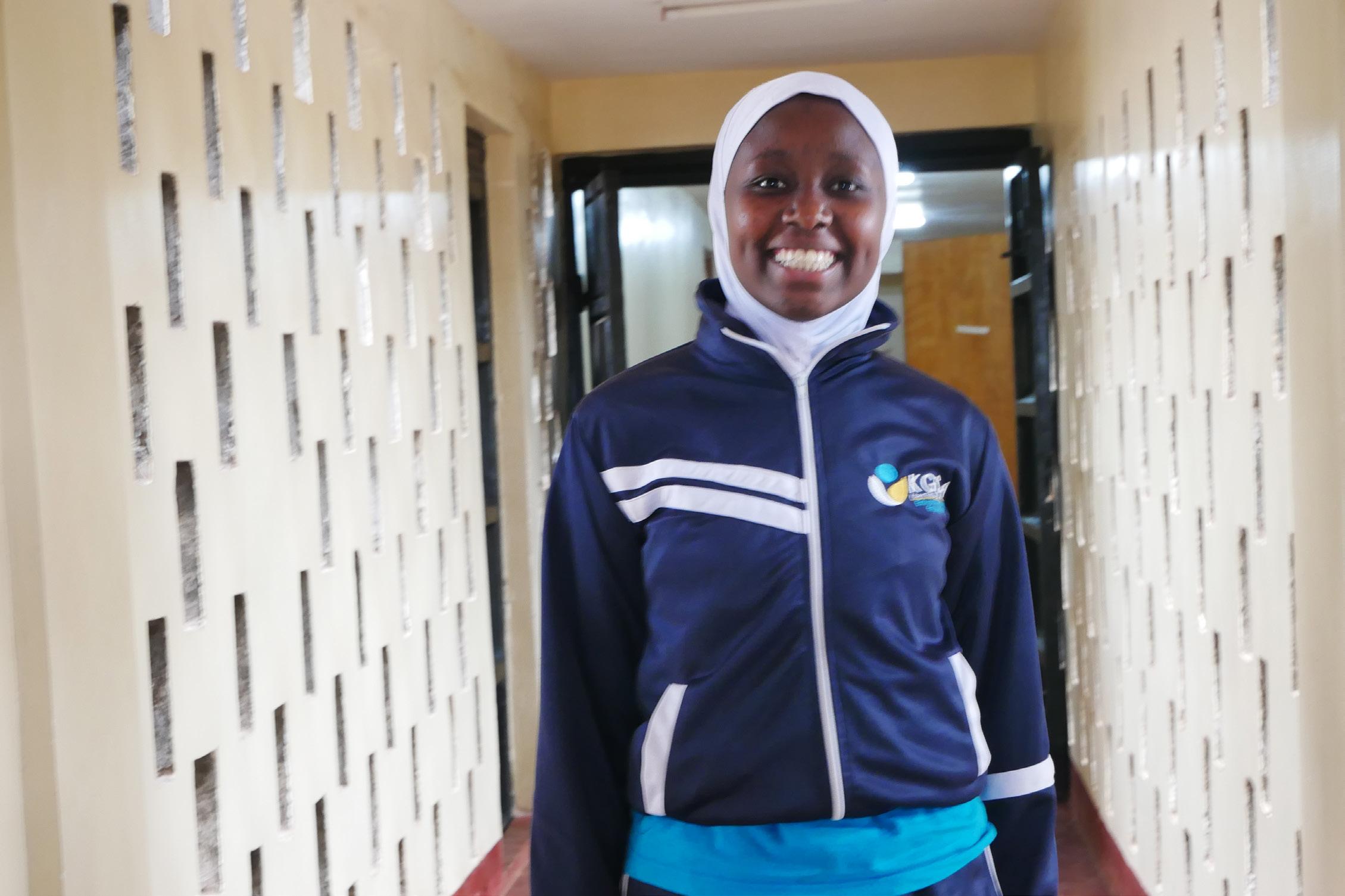
ZAKIA ALI
If we must die, let it not be like hogs.
Hunted and penned in an inglorious spot. While round us bark the mad and hungry dogs. Making their mock at our accursed lot.
If we must die! Oh! Let us nobly die.
So that our precious blood may not be shed. In rain then even the monsters we defy. Shall be constrained to honor us through dead.
O kinsmen! We must meet the common foe!
Though far outnumbered let us show us brave
And for their thousands blows deal one death blow
What though before us lies the grave
Like men we will face the murderous, cowardly pack
Pressed to the wall, dying but fighting back.
YVONNA SABOKE
Rise and Shine KGSA
A school with great dreams
I take this chance to write this Article to all school but most Especially KGSA students
Who yearn for knowledge and to persue their dreams
I would wish to say that there is a great dream Indeed there is a great KGSA
A dream of total achievement and academic prosperity
Just as our motto denotes “Educate, Inspire, Empower” so as our results
We are aiming higher
I thank the administration and teaching staff
For their tireless efforts to make sure, That the meaning of the motto is realized
KGSA should remain the only girls’ school of choice
MISHEL ATSIENO
Some of us come from different backgrounds. It is a matter of us to either change it or improve it no matter how hard it is. I would always tell you, if life gives you a lemon, make lemonade out of it and enjoy your drink.
So will the principal lead the school to prosperity land
The land where students eat wisdom and drink knowledge
The land where we only swim in as winners
Long live KGSA, long live the foundation
16

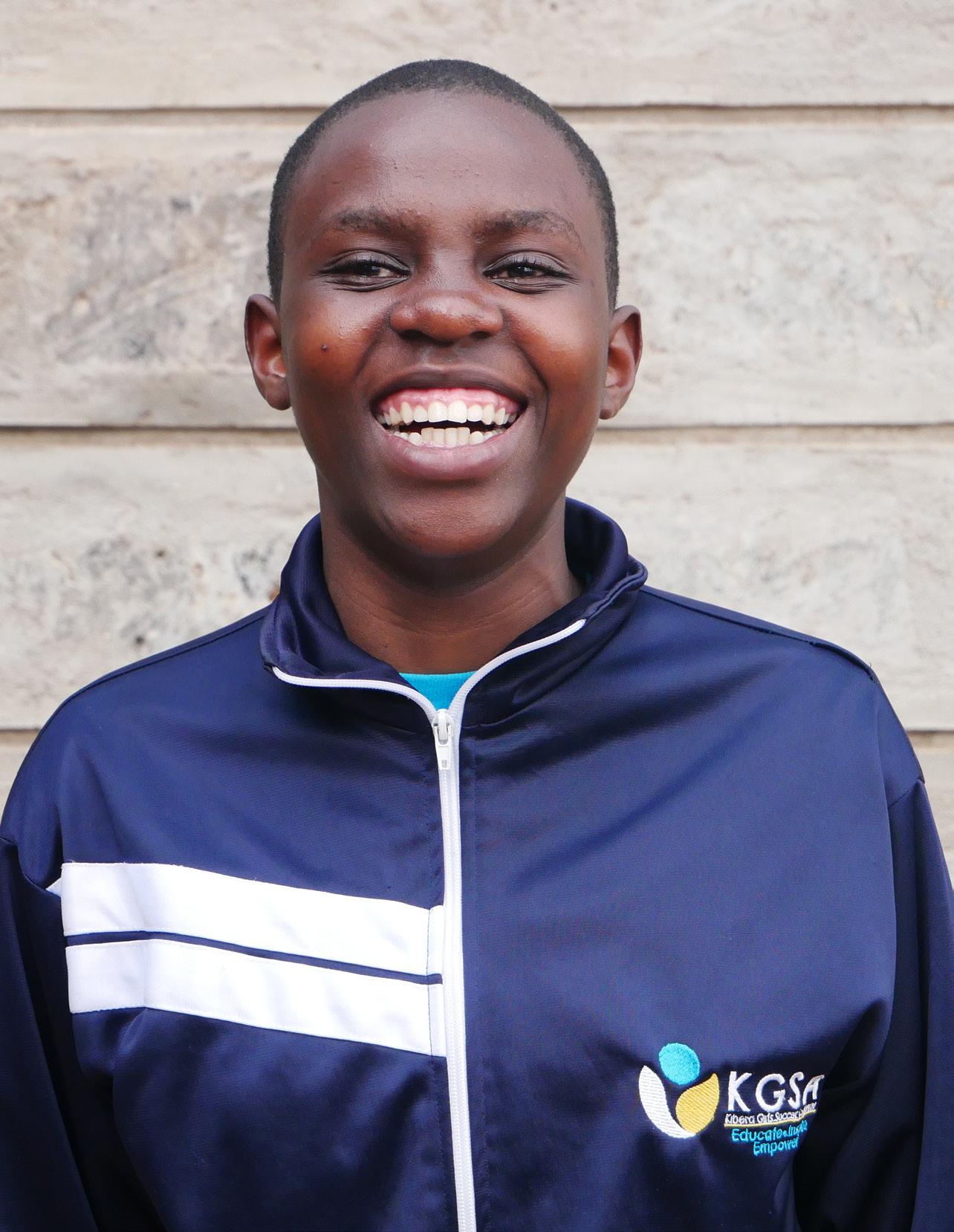
 Yvonna Saboke Mishel Atsieno
Zakia Ali
Yvonna Saboke Mishel Atsieno
Zakia Ali
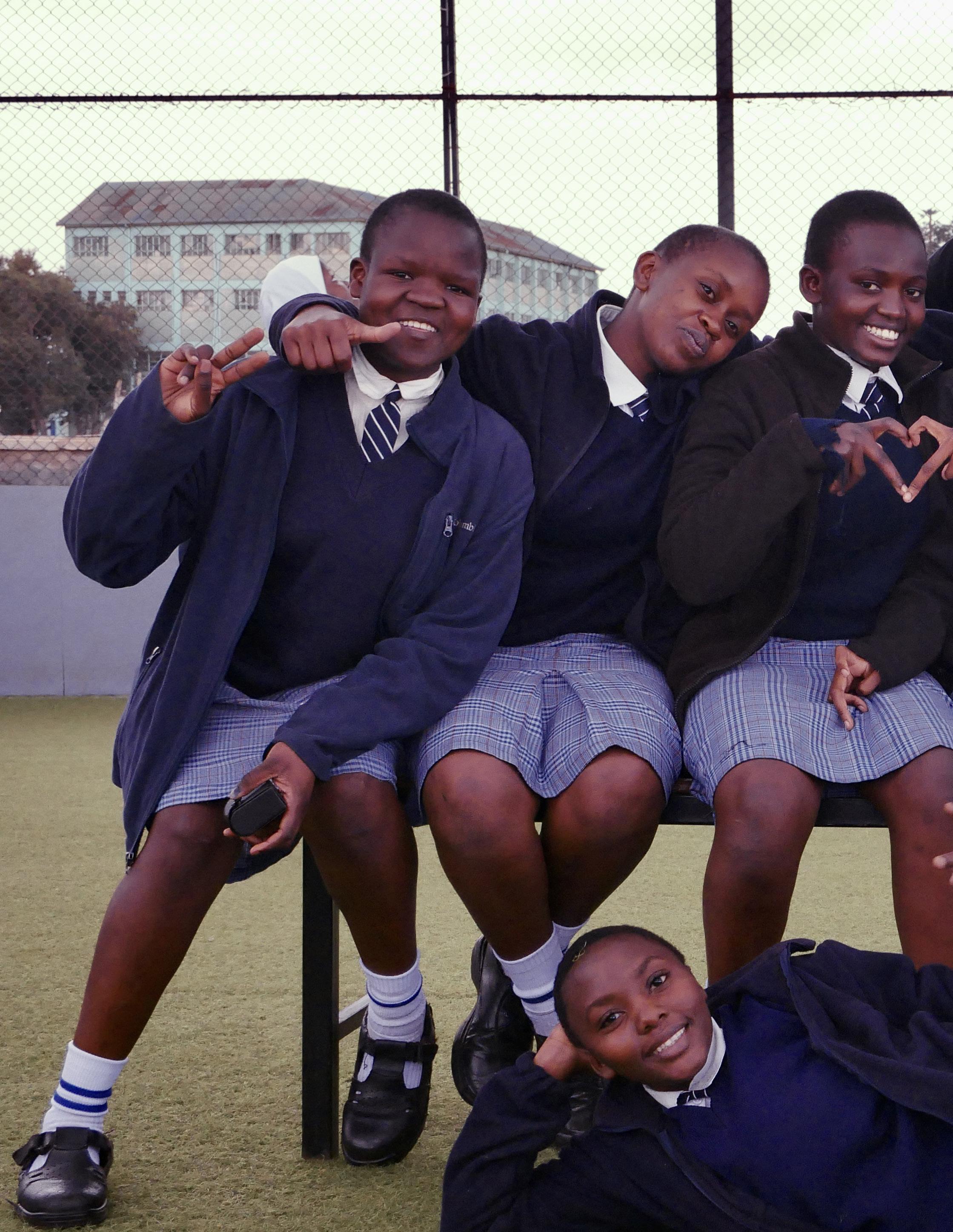
18
Senior Class 2022

19
SALMA AMISA

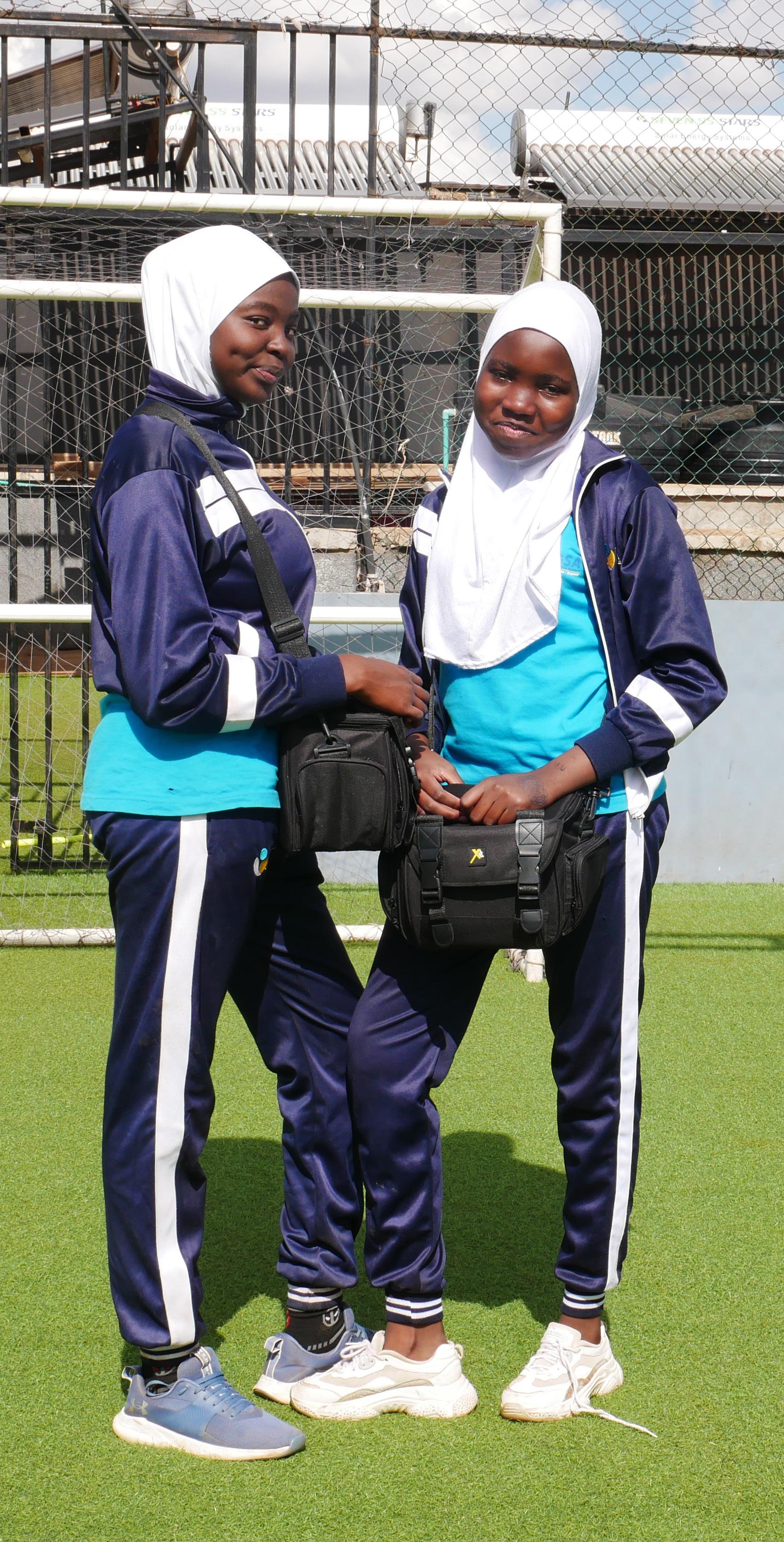
Motivational Quote
There are no great people on earth, only the ordinary, but the difference is that some have bigger dreams than others and that the poorest man on earth is a man without a dream, and the most frustrated a man with a dream that never becomes a reality.
CHRISTINE TINA
Motivational Quote
Life is like a trip, the problem is we don’t know the road to reach our destination, we need to search the route to reach our destination.
20
About the KGSA
The Kibera Girls Soccer Academy, or KGSA, provides a free, holistic high school education to 130 girls every year in Kibera, Kenya—one of Africa’s largest informal settlements. KGSA’s mission is to break the cycle of poverty for girls and their families, empowering them to become stronger, more independent, and resilient women. Global Vantage is looking forward to strengthening this unique connection through student exchanges and further collaboration with their Journalism Club.
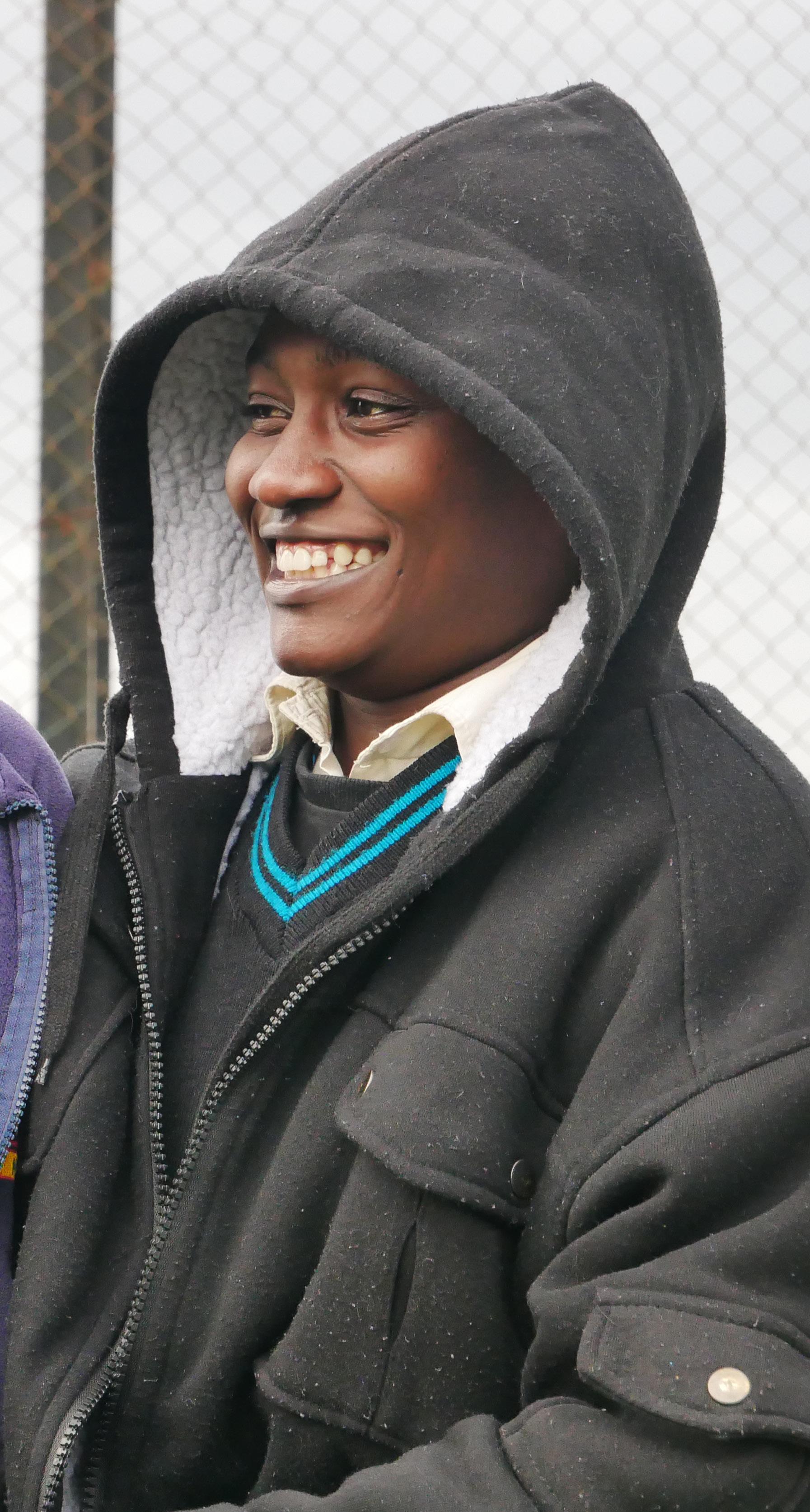
kgsafoundation.org

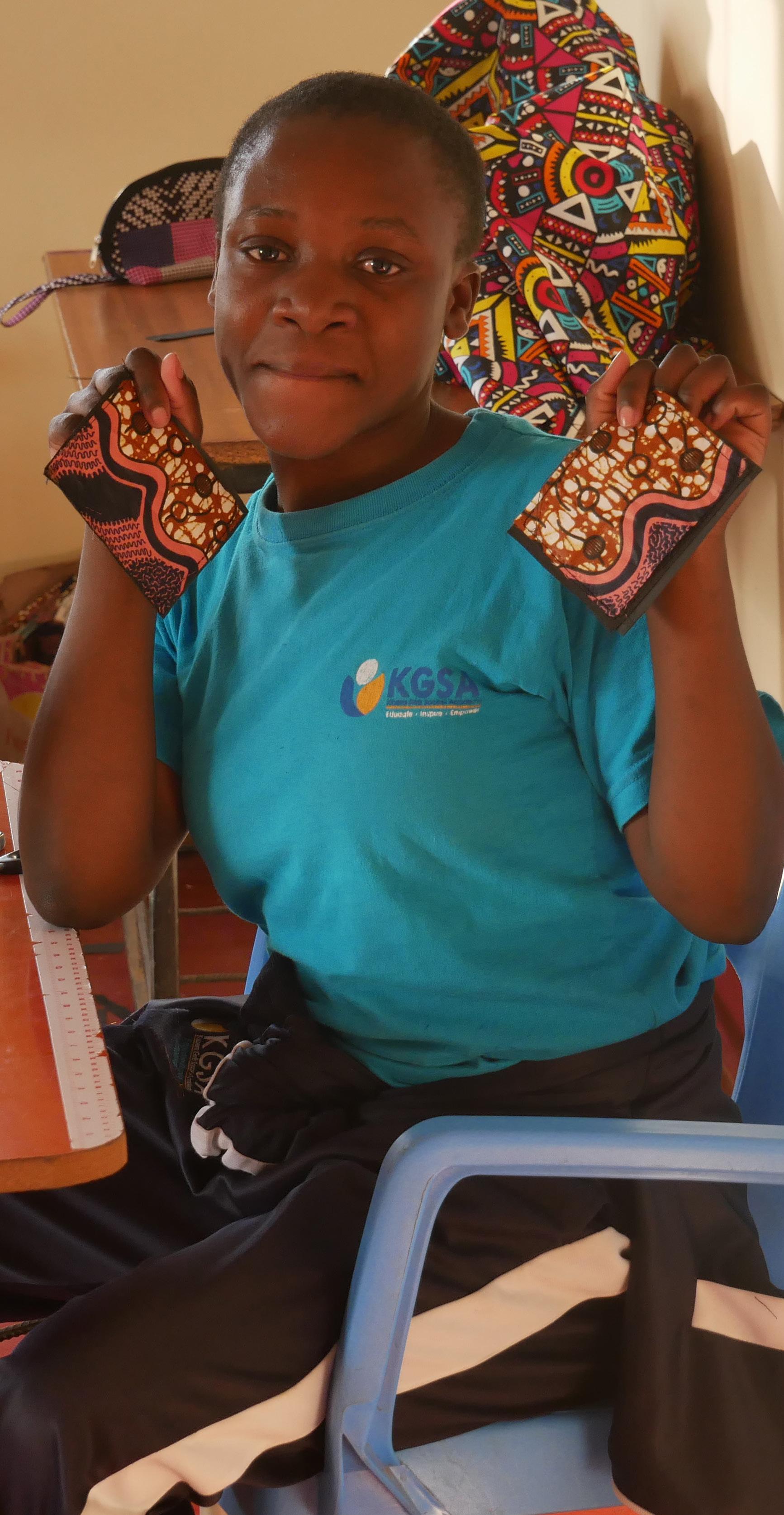
21
Uncovering Tijuana: Love Behind the Yellow Filter
Written by: Emma Aparicio & Carlos Gonzales
When you think about México, what’s the first thing that comes to mind? Tacos, hats, Cancún, drug trafficking? While some of these ideas may partially represent the complexity of the country, most of them are limited stereotypes that have caught the attention of mainstream media in recent years. It is further emphasized with Hollywood movies that are unable to depict the country without yellow filters; instead of showing the cultural diversity of the countries in Central America, they represent
them as places in which crime and corruption seem to be their main features.
México, like any other country, does have negative aspects. However, it is also one of the most diverse countries in the world, including its distinct regional architectures, a wide variety of landscapes, unique gastronomy, and astonishing traditions.
Tijuana is a city in the north of México, bordering San Ysidro and San Diego. The aim of this article is to show the amazing things that are happening in the city, such as its cultural diversity, altruism, gastronomy, and hospitality.

22
Art
At first, what stands out the most in Mexican culture is its unique and gorgeous artistry. With a variety of colors, techniques, and styles, Mexican art learns to constantly grow and evolve, breaking free of all stereotypes; in doing so, it becomes timeless. You can also experience this art phenomenon in Tijuana which, thanks to the cultural diversity created by migration, has become even richer.
In Tijuana, art is born on the streets because that is where the essence of its inhabitants lies. From the classic organ grinders to the fantastic muralists, they all portray passion and love through their expertise.
Another aspect that is often present in the attitude of Mexicans toward art is innovation. The average Mexican does not hesitate to undertake risks for new challenges. This dynamic is further strengthened in Tijuana because the variety of artisans, who offer their pieces of pottery or sewing, create unique pieces often combining elements from different cultures, a product of migration.
Music is also a representation of art in México, and while traditional music, like Mariachi, is an important part of our heritage, Mexican music is not just limited to this genre.
In Tijuana, we can find several artists that explore a variety of genres, for example, the alternative rock group Tijuana No! who writes about social criticism and other related themes through beautifully composed melodies. There is also Julieta Venegas, an acclaimed pop singer that has moved hearts with her songs. More recently, we have Bruses, an emerging artist who has quickly connected with the teen community and shows great potential.
Gastronomy
Tijuana, along with neighboring Valle de Guadalupe, has become a culinary mecca in recent years, due to its wide variety of food. It includes tacos, street food, specialty coffee, craft beer, and most prominently, BajaMed cuisine.
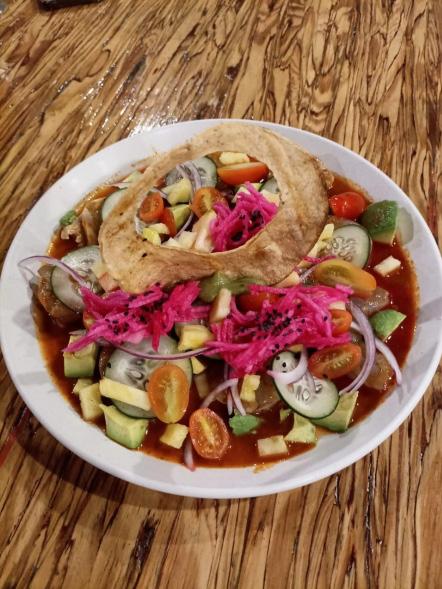 by KOKOPELI
by KOKOPELI
23
“A cuisine with Mexican, Mediterranean, and as the icing on the cake oriental influences, that is BajaMed.”
—Miguel Ángel Guerrero
Maui Waui, shrimp dish at TRAS/HORIZONTE
The main ingredients used in this cuisine are those that can be locally sourced like abalone, lobster, sea urchin, and tuna, which go very well with the excellent wines from neighboring Valle de Guadalupe. This cuisine movement is also known for its unique presentation and genuine concern for the environment; most of their dishes are created with local products. BajaMed cuisine is featured in various restaurants in Tijuana, such as “La Querencia” by chef Guerrero and “Misión 19” by chef Javier Plascencia.
Of course, we’re not leaving the legendary tacos out; an original Mexican dish that has transcended minds and borders, it is special because of its flavor and original style. Like almost everything in México, there is significant diversity when it comes to tacos, which is something that not many people know about. There are tacos de asada, de adobada, de carnitas, de cochinita, de barbacoa, de camarón enchilado, de canasta, among many others. All are worth trying if you ever visit México.
Migration
Migration plays an important role in making Tijuana as diverse as it is. Many people come to the city in search of better opportunities, and most of the time with the ultimate goal of crossing the border up north and into the US. With this in mind, we conducted an interview with Rossana López, a volunteer at “Casa del Migrante,” and a migrant herself.
Rossana migrated to México from Colombia in 2018 in the pursuit of higher education, and she is currently working on her thesis about therapy and migrant families at UCSD. In this interview, we tried to understand the feelings

and experiences of a migrant in México. “I love México very much because it is a country that has given me the opportunities to study,” says Rossana. In her experience she tells us about how Mexicans, specifically people in Tijuana, have been very kind to her. The average Mexican is used to the phenomenon of migration, so when it comes to welcoming differences in backgrounds and diversity, they typically are very open.
Rossana also told us that approximately 200 people a day visited the migrant shelters in Tijuana (this was pre-pandemic capacity reduction); while this could seem like a problem and a resource challenge, she mentions that Tijuana’s community has always supported the shelter in this regard, more so than the local authorities.
24
Mural “Love is Love” by Tijuana’s artist Czsar Kandinsky
She goes on to mention that migration is a positive factor for Tijuana, as it brings great diversity in all aspects: you can walk through the streets and easily find a variety of food places from different countries.

It also helps to broaden the perspectives of everyone’s worldview; she mentions that “A space for community is created […] and here you begin to have other types of cultures and perspectives.” This is an invaluable factor because the environment helps you grow along with and learn from others.
Love is present in the ways we relate to each other and in the way we see each other. Migration is an undeniable part of our country now. This is actually a good thing because as Rossana mentions, “There is not a single culture in Tijuana, it is like a hybrid of all those cultures, and that generates a lot of wealth because it is as if you do not need to go to all those countries to meet a person from there.”
Something special about Mexicans is that “nosotros no nos rajamos.” Despite challenges, we are always trying to improve and grow in every way, and that’s the core of Mexican idiosyncrasy. Tijuana is the perfect example of it: a fabulous, magical, and colorful city with a lot of positive aspects; art, gastronomy, culture, and solidarity, that overshadows the prejudices imposed by the media.
México is one of the most culturally diverse countries in the world and as a result, it has become the place to create a wonderful community that is filled with love.
Visit
25
“Tijuana is a community that supports, helps, and tries to harness resources to be able to collaborate with people,”
—says Rossana.
Pasaje Rodriguez, located in the center of Tijuana.
the Global Vantage website to read more about our partnership with CETYS High School in Tijuana, Mexico. cetys.mx/en
EL PARQUE DE LA AMISTAD


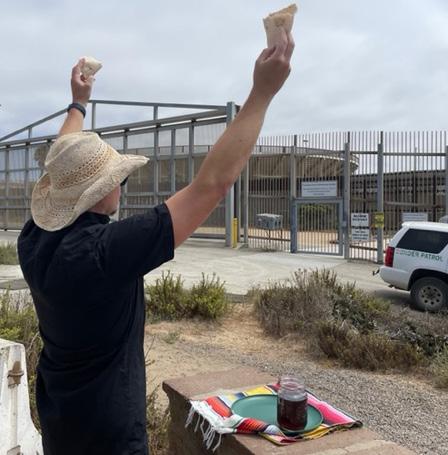 Photographs by María Teresa Fernandez, interviewed by Ruthie King, edited for clarity by Haley Esbeck
Photographs by María Teresa Fernandez, interviewed by Ruthie King, edited for clarity by Haley Esbeck
Istarted to photograph the Border Fence between Mexico and the United States in 2000 as a project for a photography class;
I called it “Cerca de la Cerca,” close to the fence. I didn’t know much about photography, and I had to work on a project and I didn’t know what to do. I decided to have a project about Tijuana, and it was originally about houses from recycled materials, and one of those neighborhoods was very close to the fence. That’s when my interest grew and I started to document all the things happening there. People were using the border fence as a canvas for installations, murals, graffiti, and other art forms, but it was all on the Mexican Side. When I traveled to the U.S. side, I found that they had Friendship Park.
“I could see that it was one of the unique sites that provided access to the border fence where the families who wanted to visit their loved ones could cross gifts, food, smiles, and hugs.“
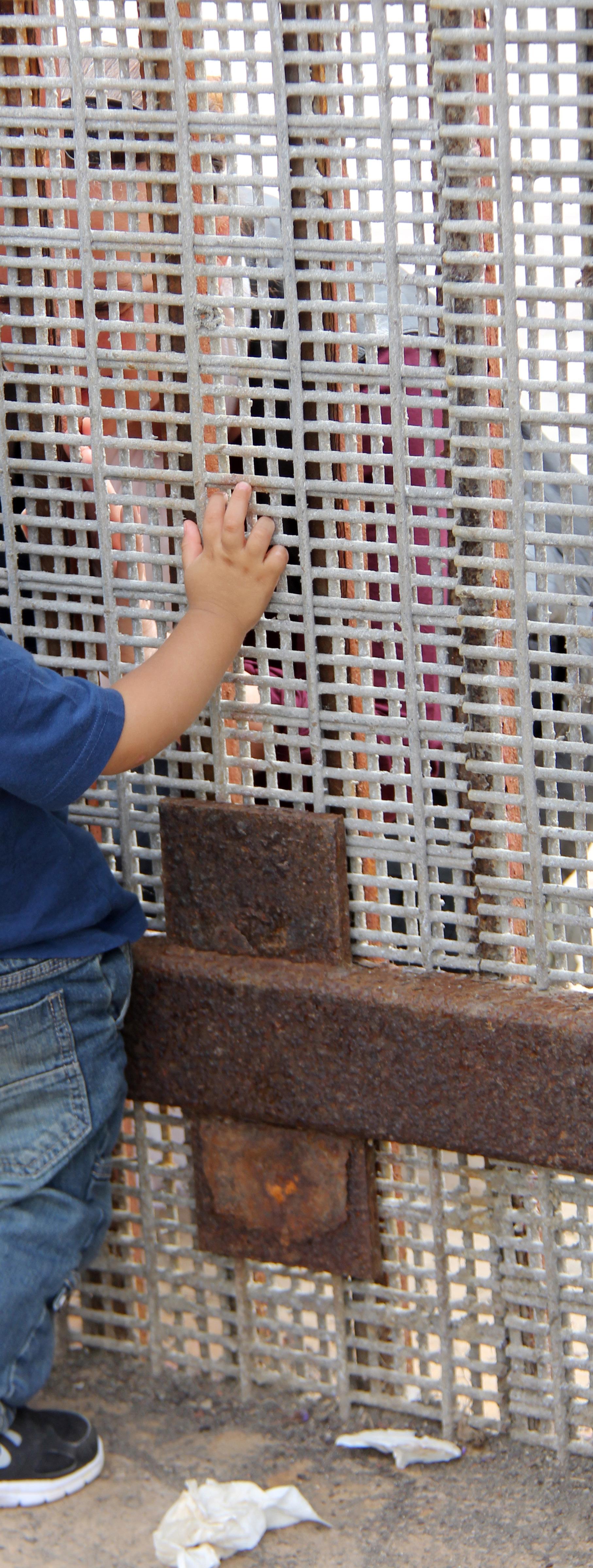
At that time, the access was not as restricted as it is since the construction of the secondary fence. I started to visit the place regularly, noticing that it was used as a place to celebrate binational events such as, yoga classes, dance classes, poetry readings organized by the activist Dan Watman, and in 2008 the Methodist Minister John Fanestil started to celebrate an ecumenical service every Sunday.
Since then, my project has continued to grow, spreading awareness about this place as a very palpable and heart-breaking human aspect of the problem of migration.
Ever since they closed Friendship Park two years ago, I had hoped that they would soon reopen it and I had the support of many divided families who wanted the same as me.
27
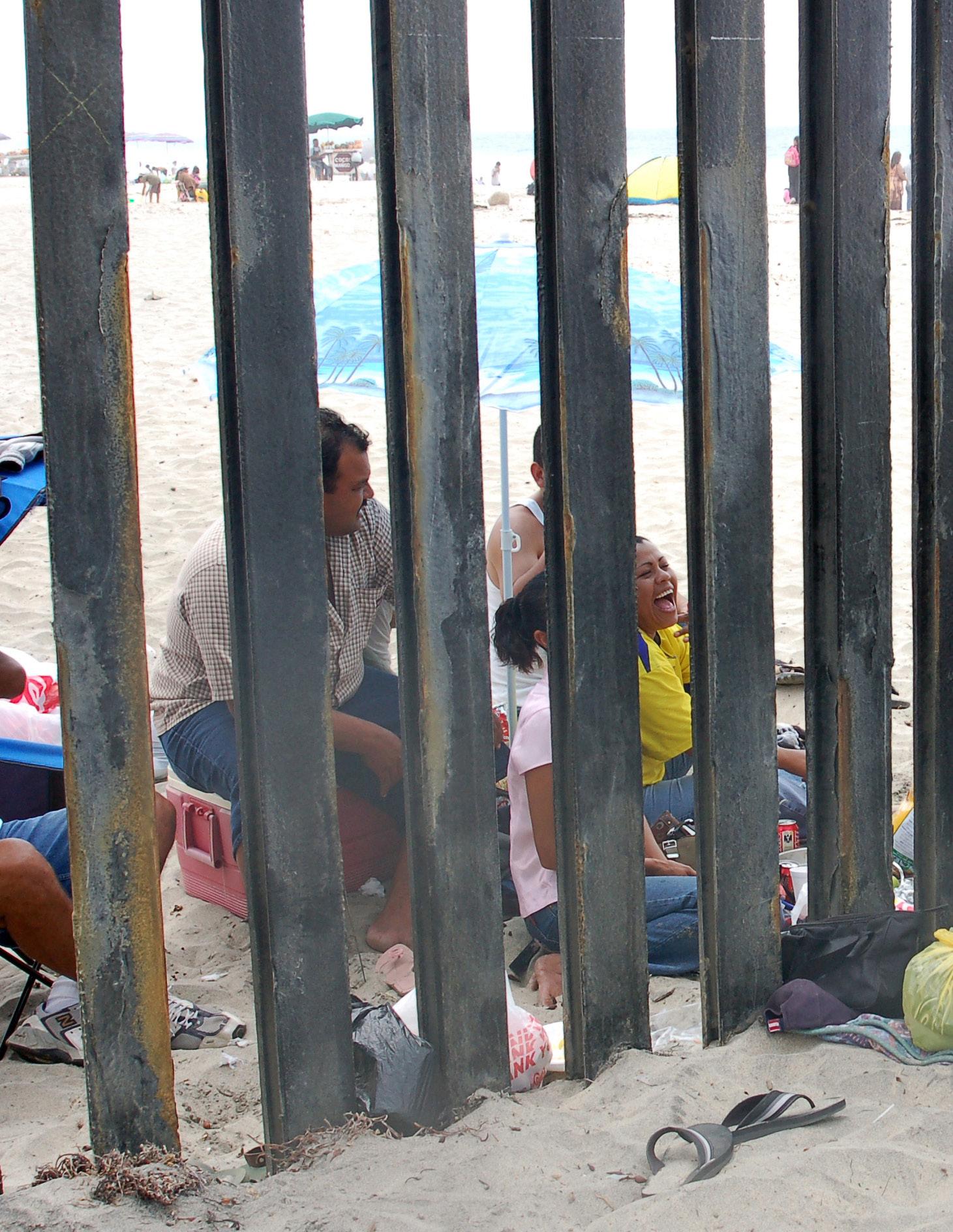
28

29
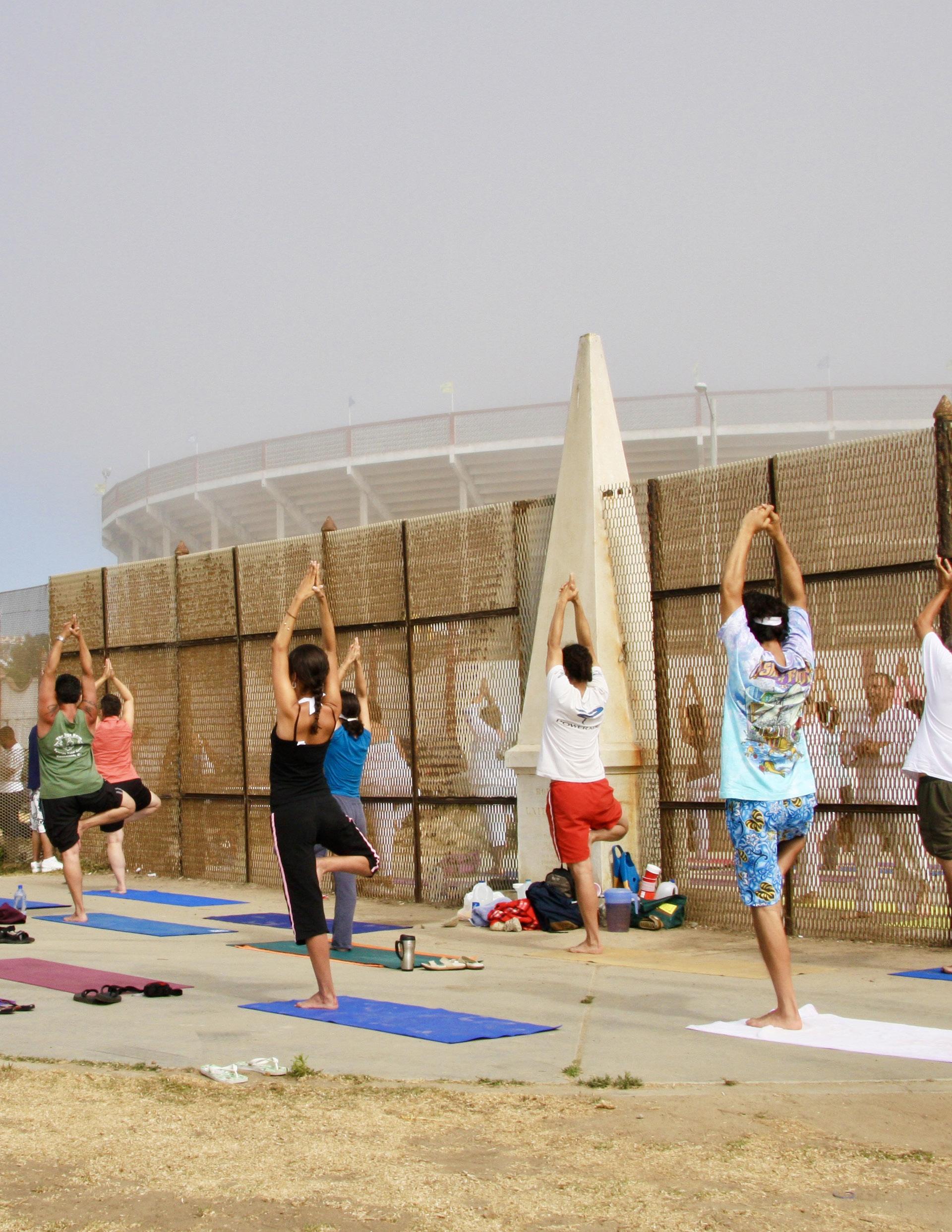
Little by little the doubt grew, and the bad news arrived that they would build two 30-foot walls in the area of the Park. A wall that would come to replace the one that now exists in front of the park, and the continuation of the installation that had been stopped under the mandate of President Biden when he ordered not to build any more walls along the border.
The announcement mobilized the Friends of the Friendship Park, and with the support of congress members and volunteers, a truce was agreed on to be able to talk about this terrible decision for the area of the park.
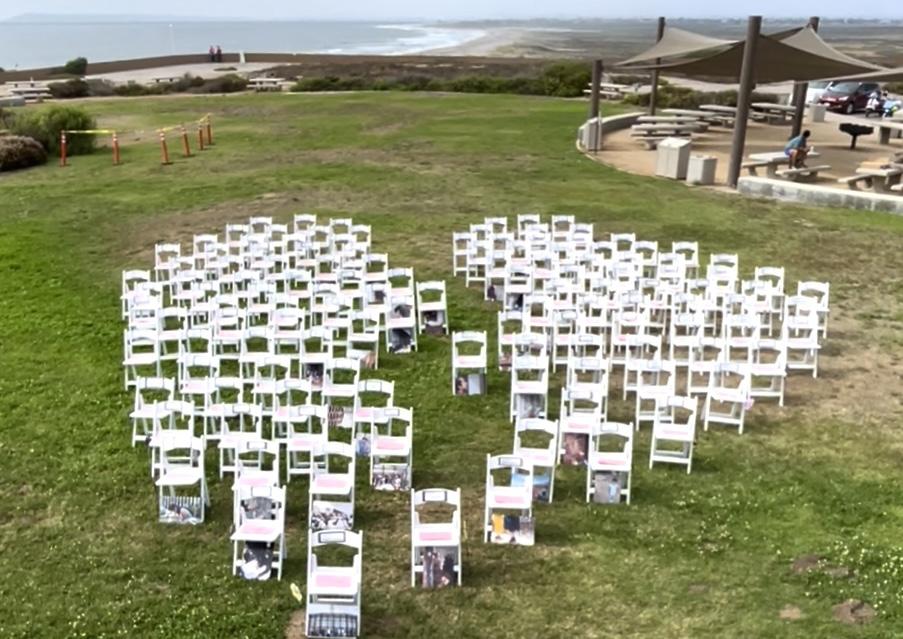
This interval has allowed a team of architects and designers to come together in a Design Summit using their creativity and generosity to propose a Park without 30-foot walls, worthy of the community not only from California but from all over the country who come with the desire to hike, see the Monument 258, horseback ride, ride their bikes, enjoy the beach, or see their loved ones, family members and friends they haven’t seen in years.
During this period, the 51st anniversary of the park took place. Once again, we could not celebrate it as we would have liked, so it happened last year that we celebrated 50 years from outside the park on the US side. This time there were no guests, only the volunteers who installed 150 empty chairs with the donor’s name in the shape of a heart and a sign installation on the beach. On the Playas de Tijuana side, there was music and rejoicing and the desire to have celebrated it by touching our fingers through the mesh, like the years before the pandemic.
Love is always stronger, people don’t care what they have to do to get to the space to see their loved ones, they will wait hours, and do anything to see the people they love. The immigration situation is incomprehensible to me because they stop people from getting close to their loved ones.
There is a lack of heart at the border control, they cannot understand the deep feeling that space has and what it means to the people. Sometimes people go years and years without seeing their loved ones, traveling long distances, only to see them and maybe touch fingers. Some haven’t seen grandparents in 10, 20 years and this is the only space they can come to. It makes me mad.
We keep our fingers crossed waiting for the decision to cancel the two 30-foot walls, that would magnify physical separation of families, damage the historical and cultural aspect of the place, as well as expose the lives of the migrants and harm the environment.
We need to keep fighting for a beautiful binational park, and space to create international friendship, a place of regional cooperation, and a place for families to see their loved ones, regardless of their physical separation.
31
September 2022 | friendshippark.org
An Interview with a Host Team Member
By Casey Archbold
Welcoming an Afghan Refugee Family
New Year’s Eve was just days away with its promise of new beginnings, tempered by a prolonged pandemic. In this new year, everything would be new for the Afghan family: each landscape, each word, each person, each room, each path towards an unknown future.
Sara was talking nervously with her fellow volunteer, “Oh my gosh, we’re going to meet this family and we don’t know anything about them. How are we going to communicate?”
In August, the Taliban had taken control of Afghanistan after U.S. troops withdrew, leaving Afghan allies and their families at risk of retaliatory violence. By December, the United States had evacuated 75,000 Afghan refugees, including those who’d worked with U.S military and civilian personnel during the twenty-year war.
Through Operation Allies Welcome, the federal government was partnering with nine resettlement agencies and more than 200 local affiliates to help Afghan refugees resettle safely in the United States. Throughout the country, communities were stepping up to support the new arrivals. When Sara heard that an Afghan refugee family would move to her town, she had reached out to the organization that was overseeing resettlement, offering to serve in the host team.
They took the family to where they would stay until moving to Sara’s town. They spoke Pashto, one of two principal languages in Afghanistan. There was a young couple in their twenties and an older couple in their thirties, with three little girls and a baby on the way.
Together, they loaded their luggage and strapped in the three children’s seats. Once in the car, the girls fell asleep for the fifty-minute
32
ride to their next home.
Upon arriving, Sara could see the family was exhausted and thus declined their kind invitation to join them for dinner. After another fifty-minute drive, she and her fellow volunteer arrived home, having begun their commitment as members of the family’s host team.
In her professional life, Sara had led refugee resettlement programs and related policy work for over two decades. Now, she was focusing on one family. How would she communicate with the family? How would she connect? How would a relationship emerge, as she focused on their immediate practical concerns? What kind of service learning would occur in the process?
Two months later, we reached out to Sara who agreed to an interview on these topics.
How did you reach out to the family once they moved to your town? Do you remember a moment when you began to know each other?
I started going over to their house to take them food shopping. Initially, I went shopping with the younger man, Khushdil. Later, the two women, Farishta and Rekhmina, joined us. The younger man is the one who deals with the outside world for the family.
We found out how to use Google Translate, so I was able to read the ingredients list to them. For example, they picked up some chocolates: one had cherry liquor. I was able to say: no, you shouldn’t eat that one, as it has alcohol, one of the things that are forbidden under Islam. The same with gelatin in baked goods. I became a bridge over those kinds of simple issues.
Where did the family shop?
Initially, they shopped at Stop & Shop. Later, they would go to the food pantries.
What was it like for the family to shop at a grocery store here?
On the first shopping trips, they were selecting all kinds of cookies. They were pretty excited to see all these amazing things. Of course, the women don’t shop at home. It’s only the men. The woman did enjoy going to the store here.
How did they find what they wanted amid shelves of products with unfamiliar packaging?
It took time before they understood how flour comes packaged. The same with yogurt. At one food pantry, they saw boxes with cakes on them. They thought there were cakes inside, so they bought a bunch of them. Then, they found out the boxes contained mixes and returned them. Eventually, we established what kind of food the family members wanted.
Where else have you gotten to know the family? Would you describe the setting for us?
At their home. Whenever you come into their house, first you take your shoes off. They usher you into the living room and invite you to sit on a small couch. If you’re the only one drinking tea, they’ll bring the tea to you on the couch. That happened just once. If you’re going to drink tea with the family, then everyone moves down to the floor around a cloth set with the food and drink. I started sitting with the family at their home and having tea and just having delightful conversations through Google Translate.
What topics do you talk about over tea?
Practical things. They’ve got a lot of things that
33
they’re worried about: getting money to their family; pursuing their legal cases for residency status. There’s still a lot of logistics around food. They now go to two pantries a week.
English language and literacy volunteers come to the house a few times a week. They are now set up with formal English language instruction with other Afghans in a nearby town. They also go to the mosque every Friday.
They’re very involved right now in a lot of medical appointments. I went there the other day and they had mail and a whole bunch of medicines. Using Google Translate, I told them: this pill has to be taken once a day, and so forth.
Because it’s a college town, students have volunteered to help, so there’s a lot of coordination. The college students have been great, especially with the tech stuff. Some have stopped by to let the family practice English with them. One or two have driven them to their English classes.
Today, a religion professor, who is Muslim, wants to go by with her husband just to visit. She’s brought them food that she picked up at a Muslim store in a nearby town.
The community has organized clothing drives for the family: coats and hats, scarves and mittens. It’s harder to get clothes for the women because they don’t want to wear Western clothes. Someone from the community donated two sewing machines, so that they can sew their own.
And you discuss all of this with Google Translate?
Yes, with the younger couple. The older couple can’t read and write, so Google Translate
doesn’t work for them.
And the children?
Zarbaha, the 4½-year-old, expects that we’ll do a little pattycake when I show up. She’s got the rhythm down. Gul Bano, the 1½-year-old, knows there will be some kind of peekaboo thing and hand slap when I arrive. Diwa, the 3-year-old, likes toys a lot. She’s often holding a doll. She’ll give it to you for a second to rock, but then pretty quickly wants it back. They are so sweet with their father. He’s constantly got three kids on him. He’s a really good father.
Do you recall moments when you’ve connected with their Mom, Rekhmina, even though she doesn’t read and write and therefore can’t use Google Translate?
Yes, there were several moments. For example, one day, I took Rekhmina to the clinic to get some lab work. As we sat in the waiting room, there was this flash of recognition between us as we saw different people walk by. At one point, this really athletic woman came striding along in these massive snow boots. Rekhmina looked at me, I looked at her, and I drew out of the memory bank this word in Urdu that I hoped would also work in Pashto, mazbut, which means strong and powerful. She laughed, and every time I come to the house, she gives me this huge hug. There have been those moments when there is a connection over something silly, something small. I think there are moments when two people know that somehow they’ve connected.
Have you had meals with the family?
Yes, several times. Everyone sits cross-legged on the carpet around the edge of the cloth. The food is served on the cloth. Everyone tears tiny
34
pieces from the common flatbread, which is like enormous pita or naan. It’s a yeasted white bread in an oval shape, about two feet long. You break off a little piece, then use that piece to grab a bit of food.
I think that’s one of the things that the women really appreciate. One of the hardest things of being a refugee is that you don’t have anything to give, when you’re in this position of always needing something. For these women who are such good cooks, to be able to cook meals for other people and to be appreciated for something that they can give, is incredibly important.
The family invited me over for a meal last week, together with three Afghan women who speak Dari, who are sisters and live in a nearby town, and two others from the host team. I was the only American at the meal.
At one point, the women went to look at the house. The younger man, Khushdil, came in at that point and said, “You understand that in our culture the men and women don’t sit in the same room”, so as to explain why he hadn’t joined us. As soon as the woman returned, he excused himself, so that the woman would feel more comfortable.
Do you sit with the men and women when you have dinner with the family?
Yes, because I’m from a different culture. However, they rarely all sit together at the same time, as they have three adorable rambunctious girls running around.
Is there a moment that expresses the essence of your experience with the family?
Yes, we were using Google Translate and the young man, Khushdil, who is able to write in
Pashto, asked: “how long are all of you going to be helping us?” So I wrote back and said: well, we’re going to be helping you a lot for these first few months. Some of us are still going to be helping you a year from now, and some of us are going to be your friends forever. He took it back and translated it into Pashto. He read it a couple of times, then put his hand to his heart. He was just really touched. It felt like it made sense to him and that he appreciated that it was a relationship of help and support, but there was this human piece that was being acknowledged that occurs between people who get to know each other.
Reflecting on your experience, what kind of learning is involved in this service of accompanying the family?
First of all, there’s learning about another culture. Because they are a family, if you go into their house, even if you’re walking into their house in your own town, you’re walking into their world. They share their food. You drink their tea. They welcome you, which is really nice.
If you work with a family, there is a sense that you learn about them, about their world, about their culture, about the ideas and misconceptions they have about us. You’re also learning about this incredible process of adaptation, as they look at different parts of what America offers to them and decide whether to take it or not to take it; what to adapt to, what not to adapt to. So you’re not only seeing a different culture, you’re seeing your own culture, which is a tremendous experience. As you know from living internationally, I think it’s the sharpest education you can have in your unexamined assumptions.
35
And it’s just so inspirational to see people starting from nothing and learning a new language and navigating a whole new way of being in the world. It’s really inspirational.
How would you compare this intimate experience of accompanying one family with your professional work in refugee resettlement?
There’s something more acute and particular about working with a single family. At the same time, the experience has reinforced a position I’ve held in my professional role. I’ve believed that the most effective refugee resettlement would be one that involved groups of volunteers over the long term. Every single person that touches this family comes away with a different sense of who the stranger is and with a softened attitude towards immigrants and refugees. I think that’s really important.
Even with all the mistakes that people have made, even with all the cultural misunderstandings, I still think that volunteers, rather than professional staff working alone, make America stronger.
I hope that we’ll have volunteers who will really stick with this family for a year or more. Maybe, some will form friendships that will last past that time, because the family doesn’t have any social network. Of course, the relationships that people have with their own communities are important, but those broader social ties are also vital. They may be the ones that get you jobs and get you information about how to navigate your new community. They’re incredibly important, and those are the ones that refugees arrive without.
What is the significance of this service learning for the young generation, who are coming of
age at a time of increased migration?
The way the world is going to look, increasingly, is people in motion across the face of the globe. As all these cultures come together in this global motion, I think it’s very important for young people to engage with the migration and resettlement process, because the younger generation is going to deal with it ten times as much as we are. We haven’t begun to see the levels of migration that the world is going to see over the next thirty, or forty or fifty years. How are we going to make this a success for people who are entering into societies where many don’t want them and are afraid of them, but where they have no choice but to be?
The United States could be a real beacon for the rest of the world because we are a nation of immigrants, because we’ve integrated so successfully wave after wave of people who, at the time they arrived, were considered really different. My faith in that success as America’s gift to the rest of the world was shaken in recent years, but prevails. Young people are growing up in a more diverse world. I think if we had a program of National Service, we really could be a beacon to the world. I think National Service would completely transform America.
Thank you for sharing your experiences in accompanying this family, as well as your deep reflections on the significance of volunteers in refugee resettlement, both for the refugees themselves and for our own country.
36
October 2022
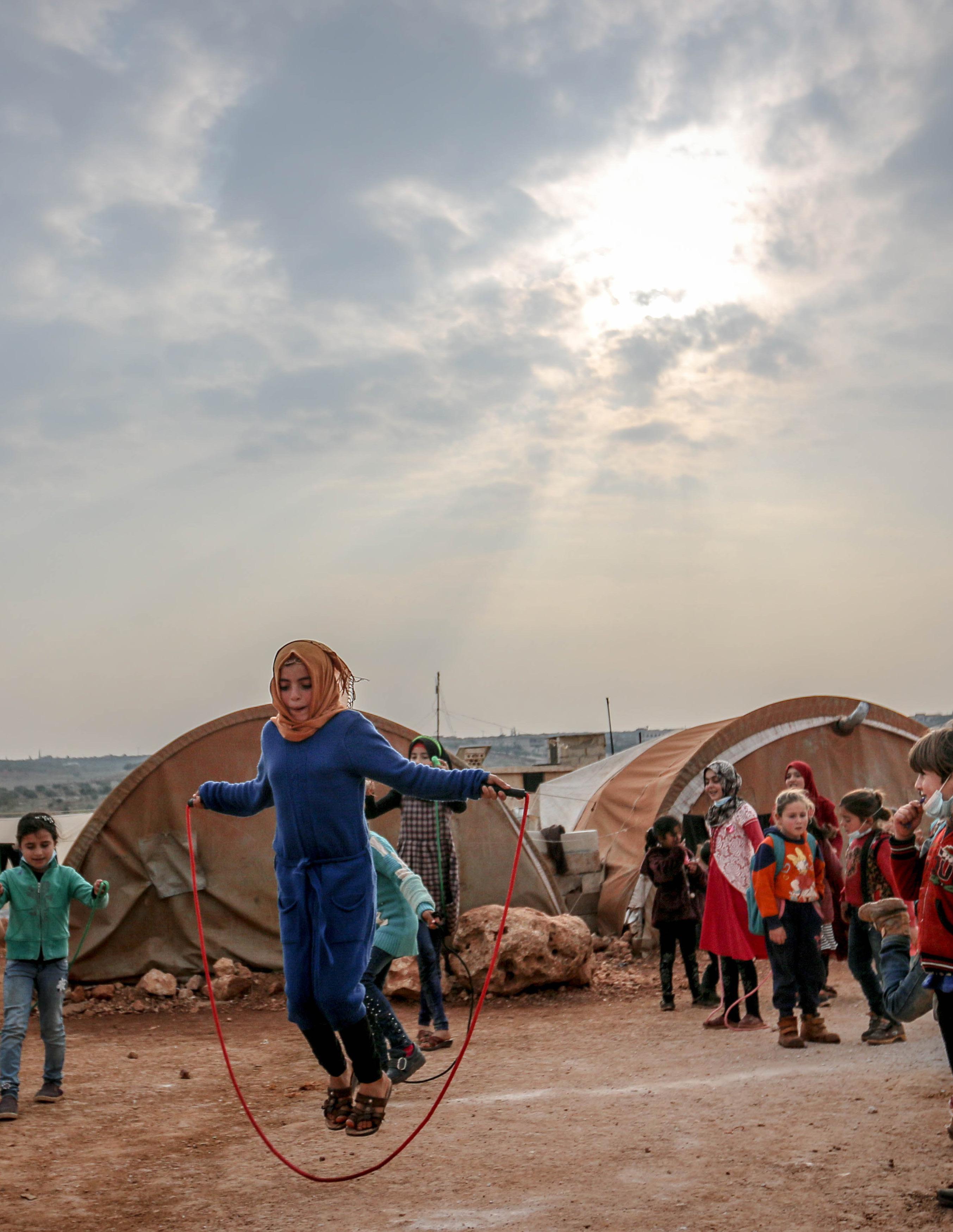 Image captured by Ahmed Akacha and acquired by Global Vantage through Pexels, a platform that empowers creators by providing completely free stock photos under the Pexels license.
Image captured by Ahmed Akacha and acquired by Global Vantage through Pexels, a platform that empowers creators by providing completely free stock photos under the Pexels license.
Moments in Perú
In the spring of 2022 as a part of their Global Travel Program, sophomores at Pacific Ridge School had the opportunity to travel to Perú on a cultural immersion and service trip. These “Moments in Perú” were captured by Haley Esbeck and provide a look into the lives of Peruvians...
Photo 1: Lookout over the Sacred Valley (Taray lookout), Peruvian women leading a llama offered handmade souvenirs for sale.
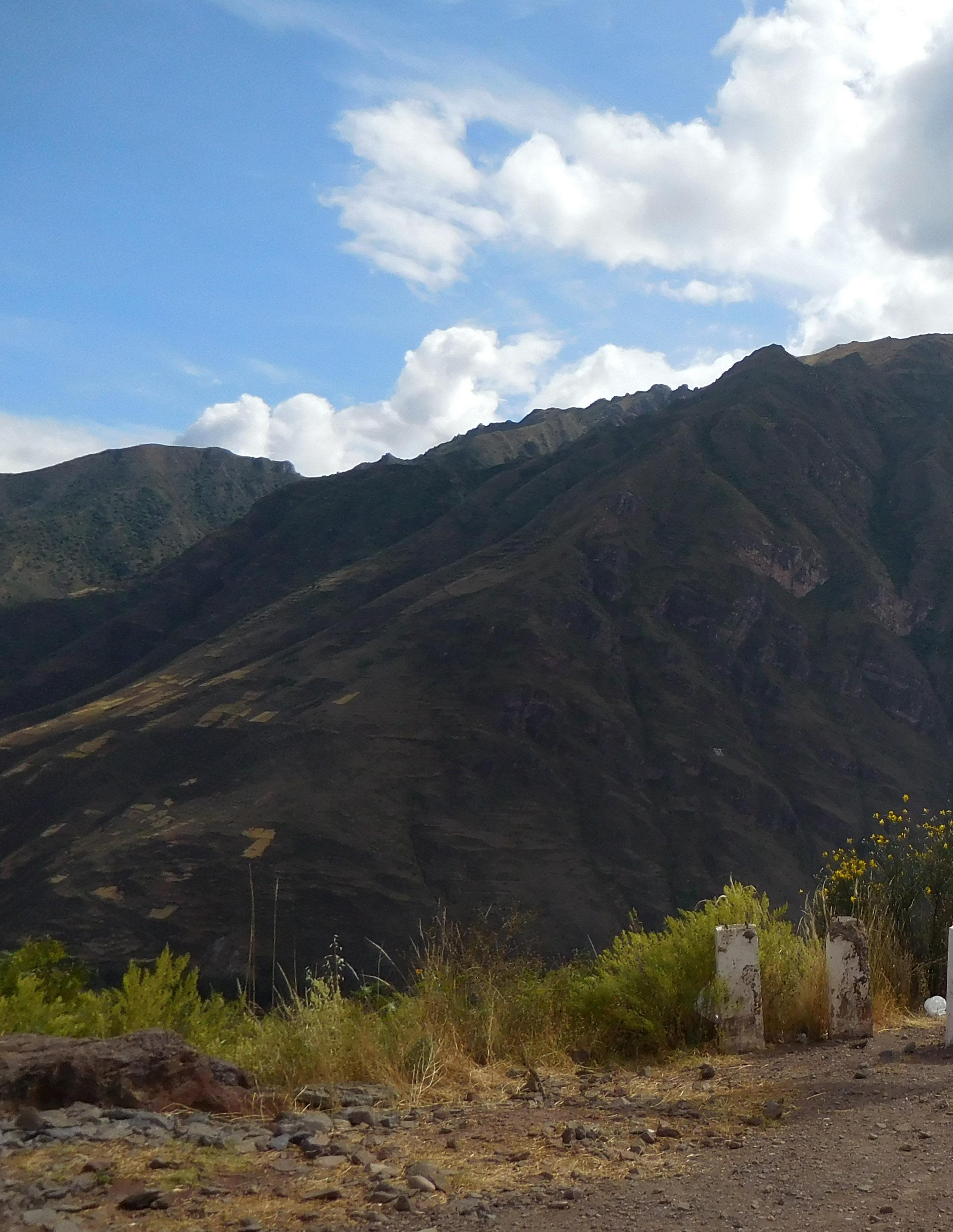
Photo 2: Two adorable kids watching curiously and eating orangesicles in an upstairs restaurant in Ollantaytambo.
Photo 3: Man loading bags of salt onto a truck at the Maras Salt Pans.
Photo 4: A street off of the main plaza in Cusco around lunch-time.
Photo 5: Woman dyeing llama wool in the town of Chincherro.
Photo 6: Parade for the summer solstice in Ollantaytambo.
Photo 7: Farms off of the Marca Phiry Trailhead.
38
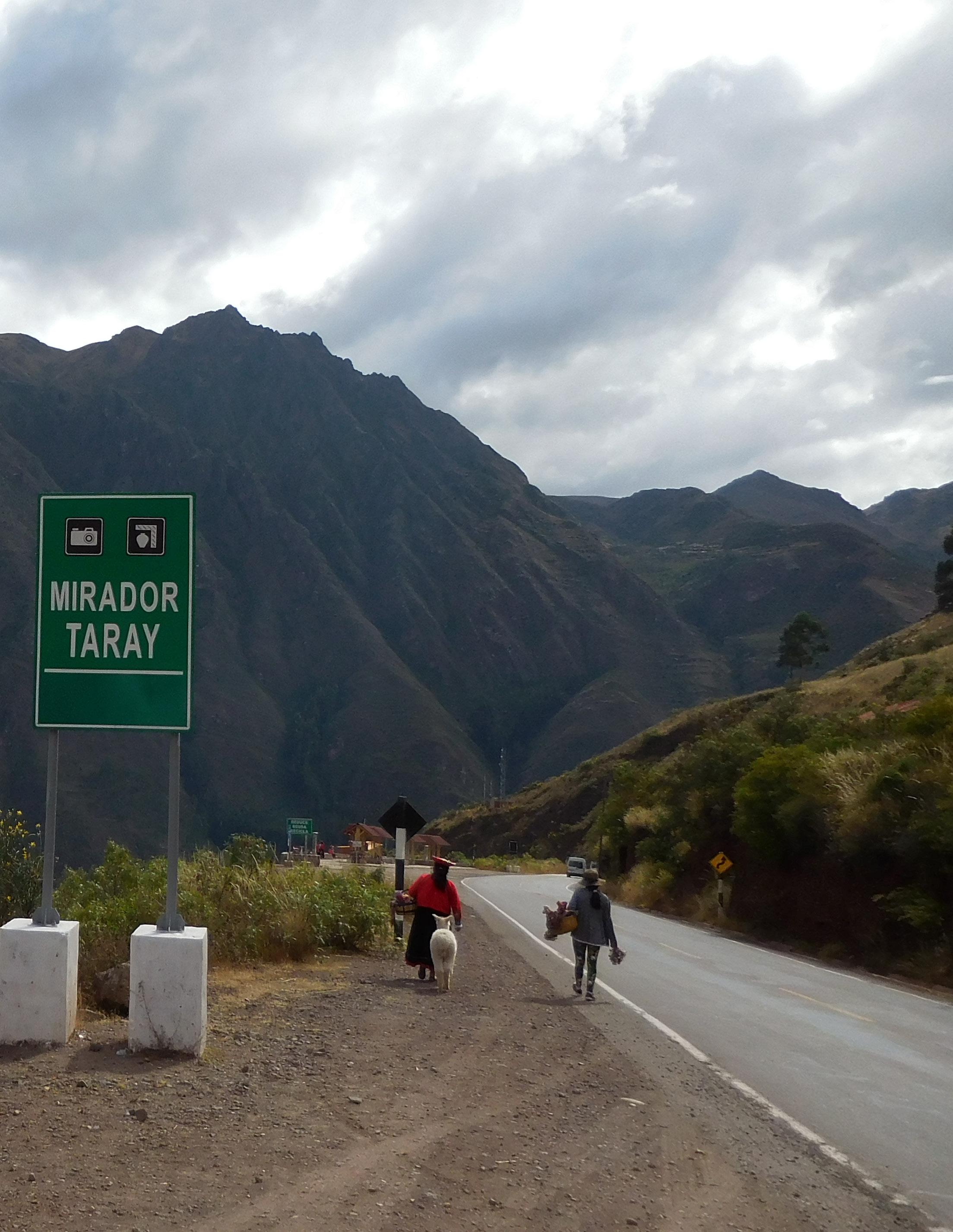
39


40

41


42


43

44
A New Perspective
All images were captured by Ainsley Cobb using a second-hand Minolta Capios 75 point & shoot 35 mm film camera, with Kodak UltraMax 400 film.
Photo 1: Pacific Ridge sophomore students play an invigorating game of football, illuminated by the golden light of a setting sun on the first evening of their community initiative. Chari, Perú
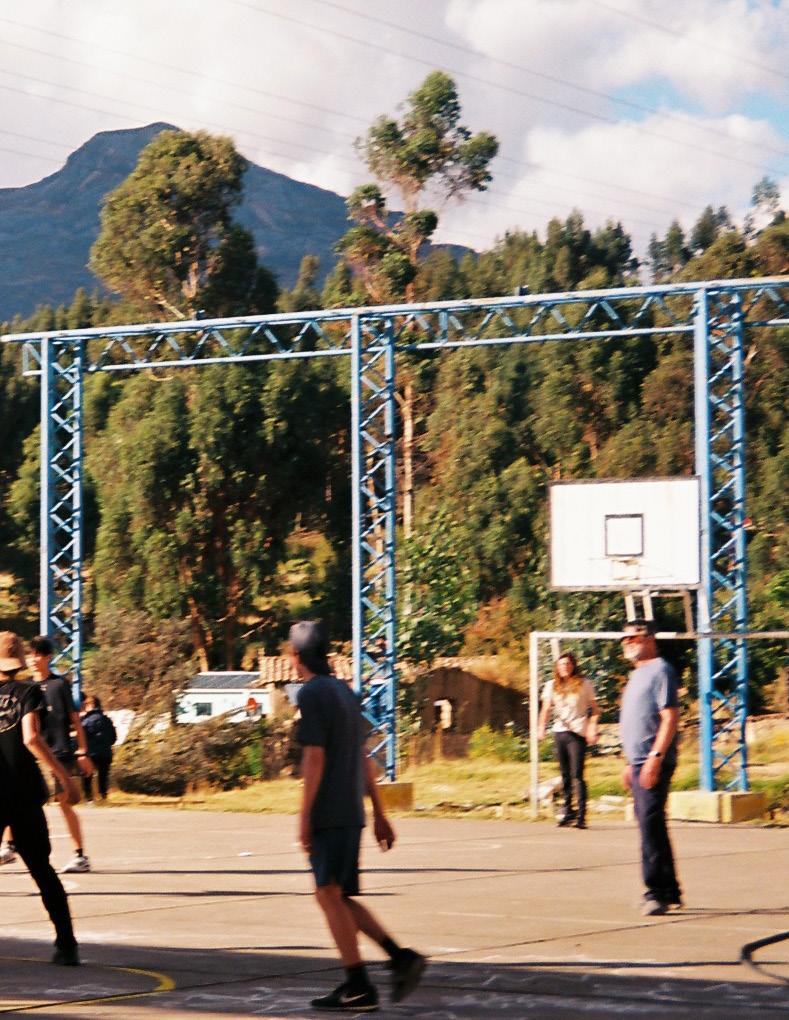
Photo 2: A shopkeeper picks from a delectable pile of fresh fruits, hunting for the perfect fruit to add to a tourist’s rapidly growing bag of fruits that they intend to taste for the first time. San Pedro Market, Cusco, Perú
Photo 3: Clouds descend the mountains of Ollantaytambo and begin to engulf the narrow corridors found between various hostels. The vibrant colors throughout these corridors contrast the dark and dampened stone street. Ollantaytambo, Perú
Photo 4: A gorgeous, plant-lined bridge branches over the gushing river that flows through the cafe-filled town of Aguas Calientes. Aguas Calientes, Perú
Photo 5: Two dogs lay comfortably on the stone floor of a bustling market, observing as tourists and locals stroll through the beautiful flower booths that make up this section of the market. San Pedro Market, Cusco, Perú
Photo 6: Reminisce of morning fog drifts through the tranquil ancient stones of Machu Picchu. Machu Picchu, Perú
Photo 7: After rising before the sun, students find themselves overlooking a seemingly empty Machu Picchu. Many find themselves in a state of silence as they begin to process the breathtaking view in person. Machu Picchu, Perú
Photo 8: Alpacas enjoy their typical day’s graze through the landscape of Machu Picchu, while still taking breaks to pose for the occasional tourist wearing an alpaca sweater. Machu Picchu, Perú
45
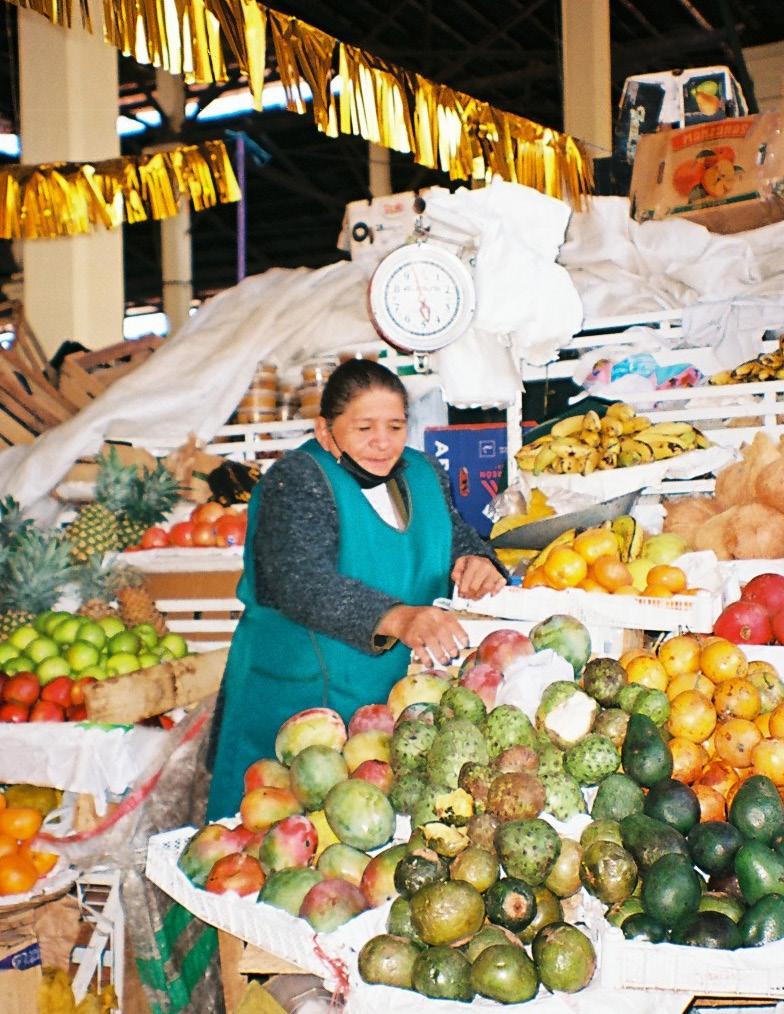

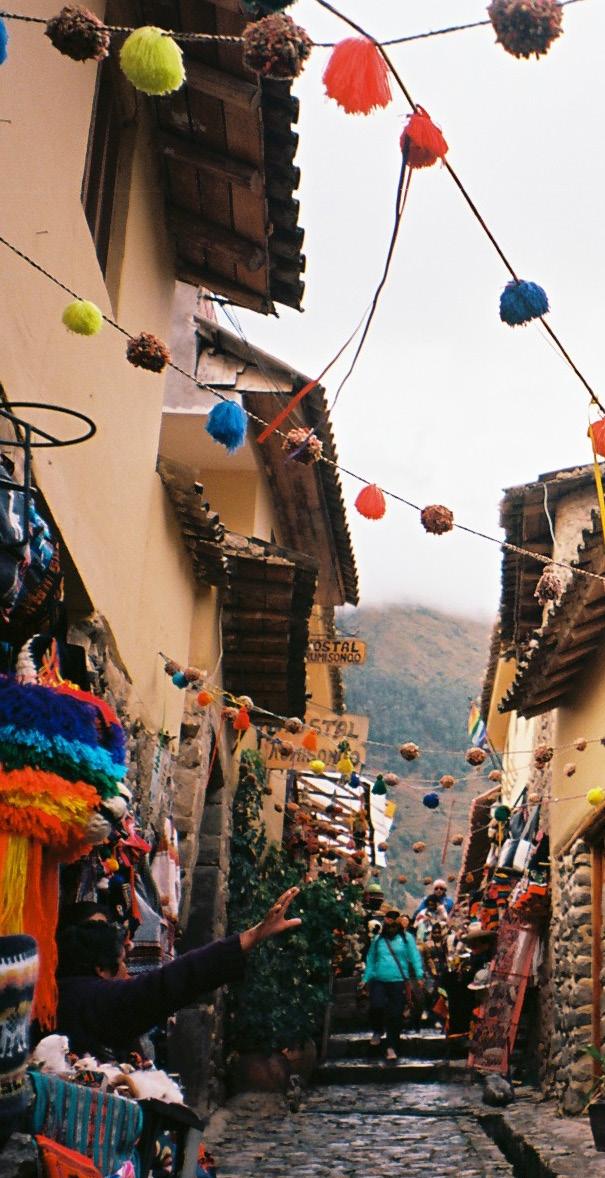




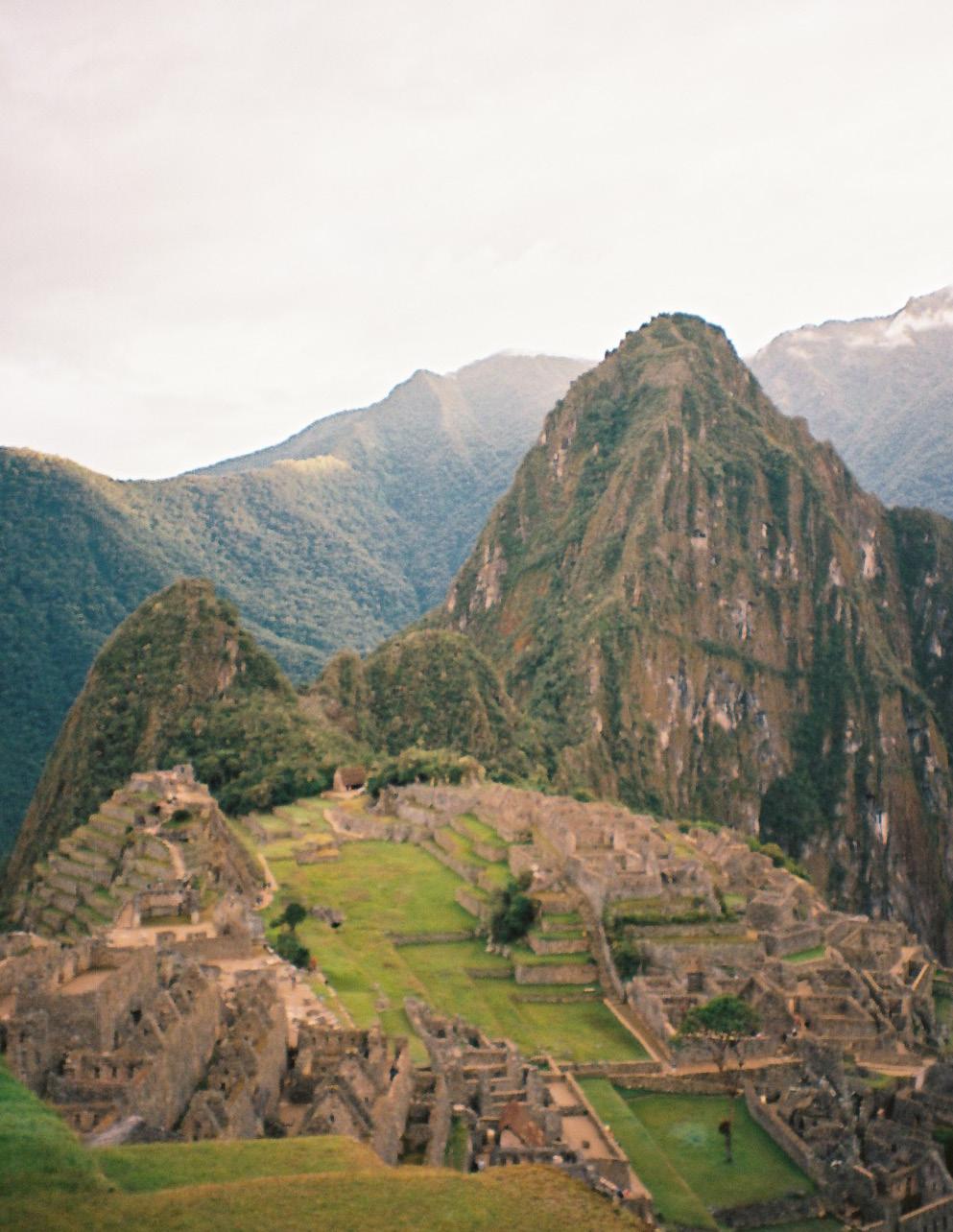
52
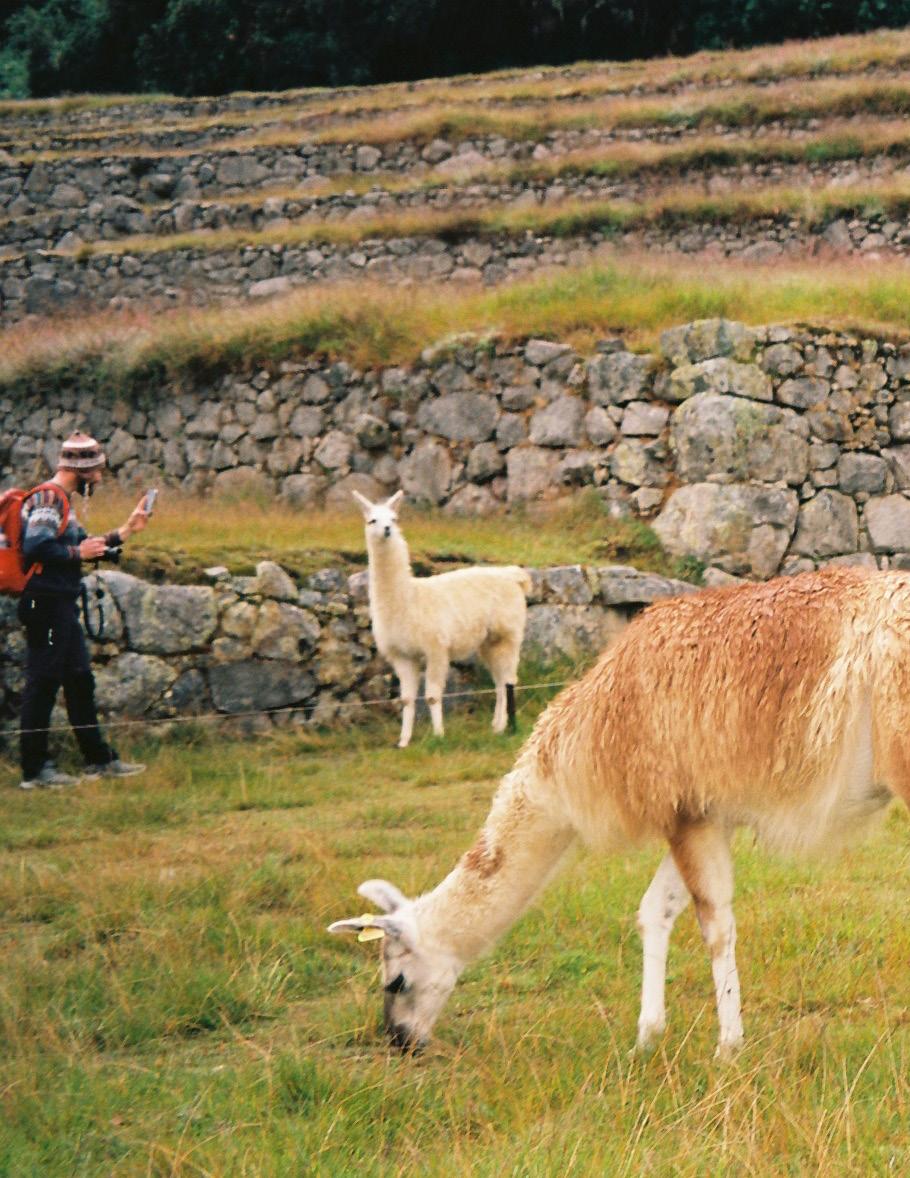
53

54
Service Spotlight
The Surfrider Foundation’s mission is focused on the protection and enjoyment of the world’s oceans, waves and beaches for all people. The “love” is fundamental to the enjoyment that is included in our mission and the work we do. It is also the “why” I have been with this organization for over 28 years. I love my job and I love protecting the coastal environment.

The coastal environment is for all people to enjoy and should be a welcoming place. The beach is not a place for hate, but for love! Who doesn’t love a day at the beach?
Protecting what we love—the ocean, waves, and beaches—is what drives us. It is what gets people involved and what has made us successful in our mission to protect and enjoy the world’s oceans, waves and beaches since we were founded in 1984.
55
“The ocean sees no race, gender, economic background, social standing, or lifestyle; in that spirit, #1PlanetOnePeople provides a platform to support the environment and communities that have experienced systemic racism, sexism, and inequality.”
— Selema Masekela, Surfrider Foundation Ambassador, surfrider.org
Sew-Inspired: An Interview with Laura Prince
Interviewed by Haley Esbeck
Laura Prince is a Special Needs Community Activist and creator of Sew-Inspired, a stitch lounge in San Marcos where she holds camps and teaches kids how to sew. Her daughter, Jasmine, was born with Down-Syndrome; she grew up learning how to sew and now runs her own charity called Jasmine’s Banner Co. sewinspired.biz
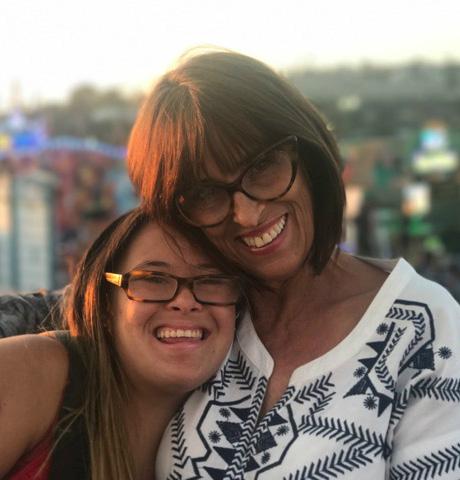
What inspired you to create your business, Sew-Inspired, and what was its original purpose?
I started in 2009, during the recession. A friend of mine had told me about a stitch lounge— which I thought was such a cute name—in San Francisco. About 25 girls started a sewing circle and then opened up a little spot with the goal to teach people how to sew. It spread to larger metropolitan cities where people could access these places easily and almost escape from the busy city life.
I heard about this and was like, “Hey… I’ve been sewing forever! I could open the first one in North County!” So I started it in my house, and then I felt like people wanted a more legitimate atmosphere, then someone saw my advertisement in the bulletin board in the old Yardage Town shop and said, “Hey, I have a dance studio and I love sewing; I would love to add that to the genre of the store.”
So I paid a portion of the rent and was there for like two years in the North Coast Business Park; eventually I got my own place. The good part about that was that I’ve never been one dollar in debt. So basically I started the business and I bought the first sewing machines from the first girls that came. When I earned like $500 from the first camps and lessons, I took $200 of that and bought new sewing machines fabric for the shop. If you have a good enough idea, it should support itself!
56
Low overhead is the secret to life, personally and with a business; cause you’re safe and you can make more mistakes, cause you will.
The theme for our magazine this year is Love, Not Hate, and your connection to the Special Needs Community really exemplifies this message. Who have your sewing programs been able to reach and how have they impacted people?
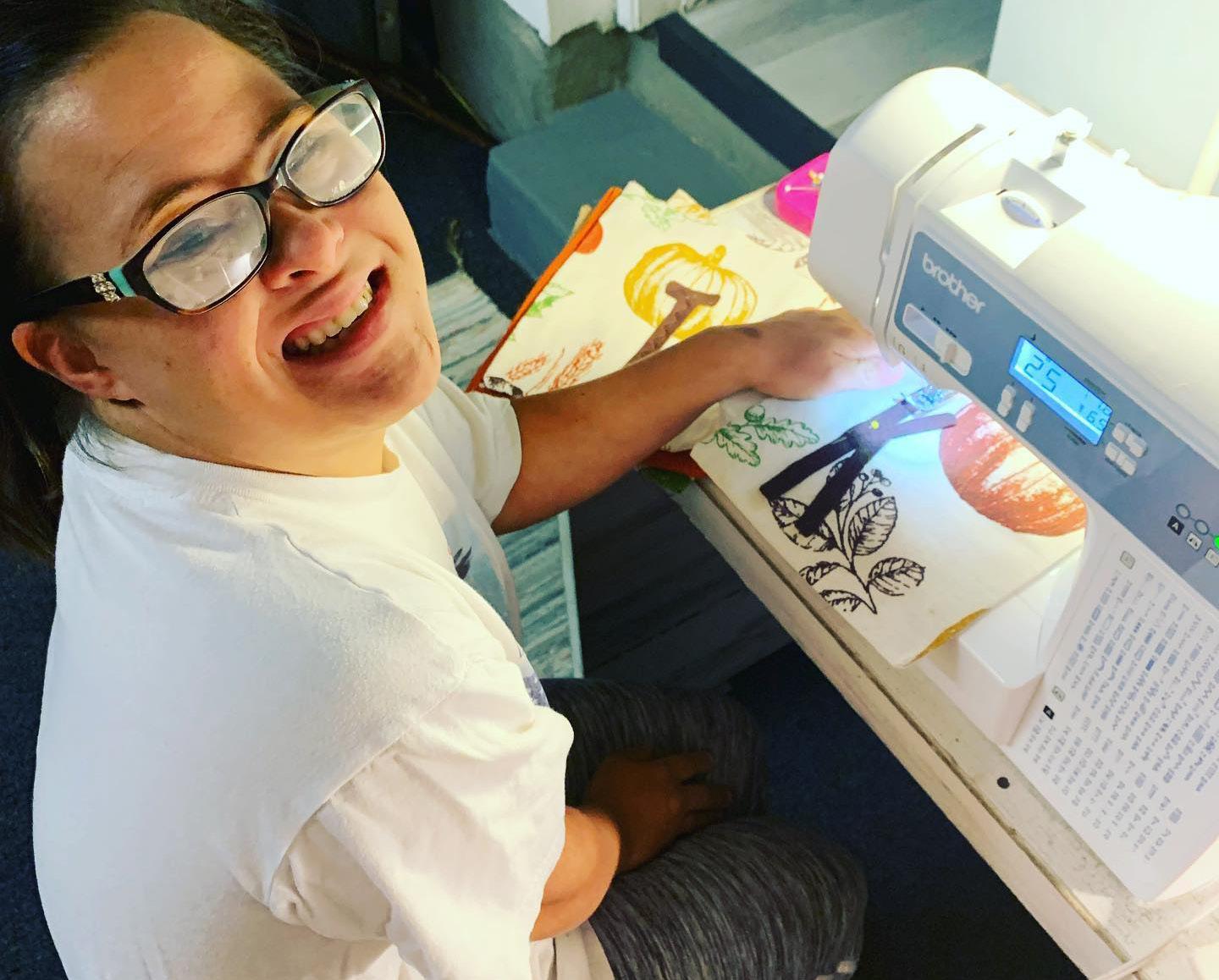
About 10% of the world’s population have special needs. To put that into perspective, if you took all the people in North and South America, that is the number of people with special needs in the world. It’s unfortunate that there aren’t that many organizations, at least here.
Especially for adults, because that’s when they struggle the most. The majority aren’t able to drive, and it’s hard for them to start families. They’re not really hated, but neglected. Love makes people thrive, but if you’re neglected, you just kind of wither, and that’s what happens to a lot of families with a loved one who has special needs. You can’t buy a friend.
If you know anyone with special needs, like a family member or a friend, be purposeful to love them and comfort them; say, “don’t worry about it, it’s cool, we’re here for you!” Go out of your way to show that you care about them, love them no matter what. Acknowledge their differences but don’t treat them inferiorly. And remember, no one is perfect! However, while everyone’s attitude can make a difference in an individual’s life, the support system for people with disabilities needs to be fixed. But isn’t everything that’s broken able to be fixed, at least in one way or another?
Beauty is in the eye of the beholder. Think if something ever happened to you or a friend.
You’d be surprised how beautiful people with special needs are, because of their different life experiences; they just radiate the essence of life, they accept you just the way you are, they don’t care about your outward appearance. A lot of new volunteers go to their first event and leave feeling nourished, there’s just something about service and accepting someone and then they accept you! I love being with them.
People need to be taught from a young age to look at people with special needs as a community that will always need a little helping hand. And there is no shame in that. It can be hard, and almost scary, for people to accept and care about the special needs community. But people shouldn’t be scared. It’s almost like when you have a salesperson come to the door and you already know that you don’t want to buy whatever they’re selling; it doesn’t matter what they say, you’re not buying it!
57
We need to get out of the mindset of “can’t somebody else do it besides me?” and choose love, not ignorance and neglect.
Laura’s daughter Jasmine sewing banner


Jermaine Horton is the founder of The Art Of Confidence Project. This project strives to


spreading overall love and positivity to the community through photography. Horton photographs youth ranging from little kids to teens in highschool, building their confidence and self esteem through his imagery. He hosts photoshoots with kids and students that have experienced any sort of discrimination, hate, or bullying, and provides an oppurtunity to make them feel good about themselves. This project has been recognized by major news companies, including CNN, Fox, ABC, CBS, The Peoples Magazine, Chicago Tribunes, Yahoo, and many more. By spreading awareness to the hate and discrimination many youth face today, he has made a visible difference in the lives of many and will continue to impact many more moving forward.
theartofconfidence.org
59
Photographer
“empower youth and restore their confidence,”
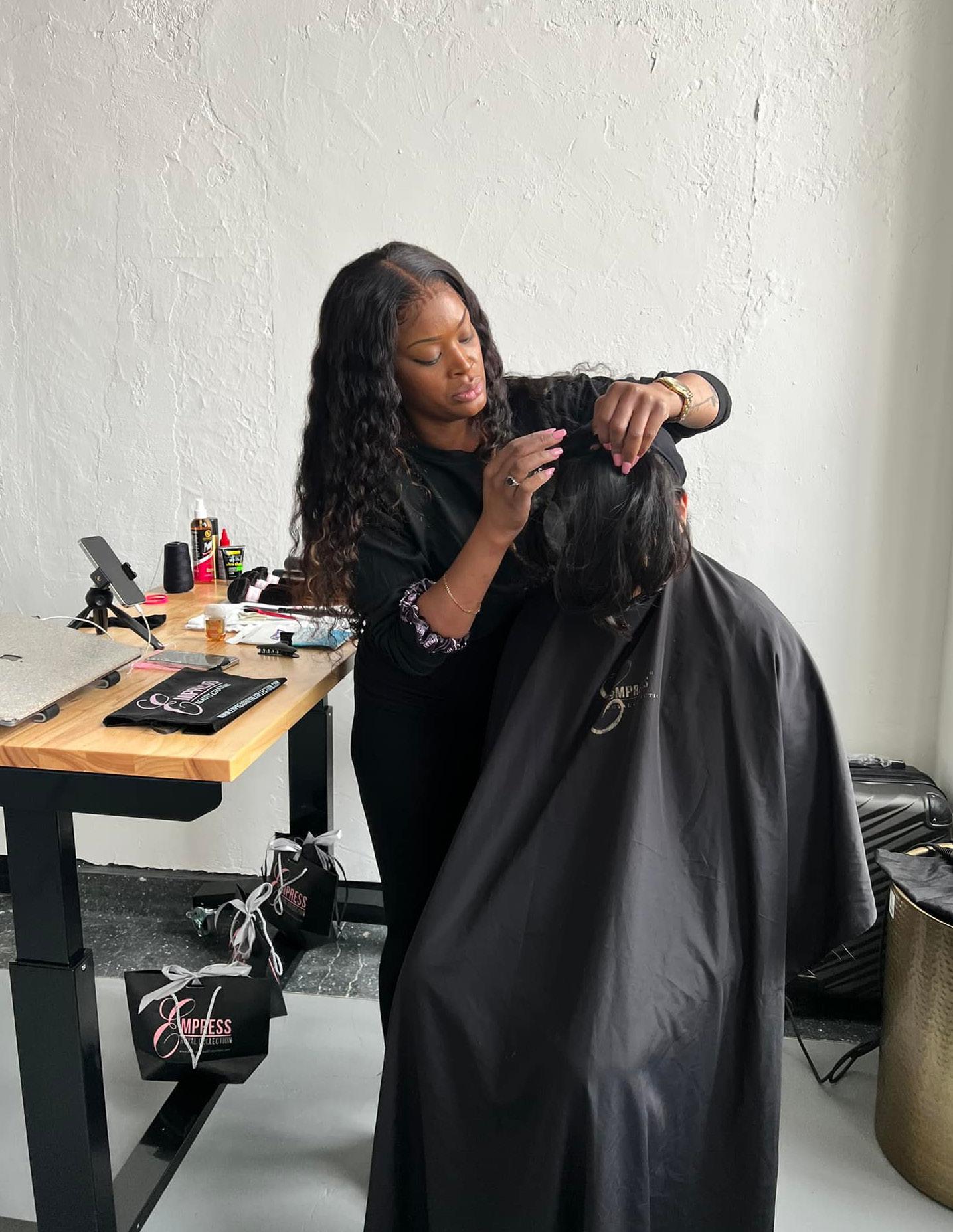
60
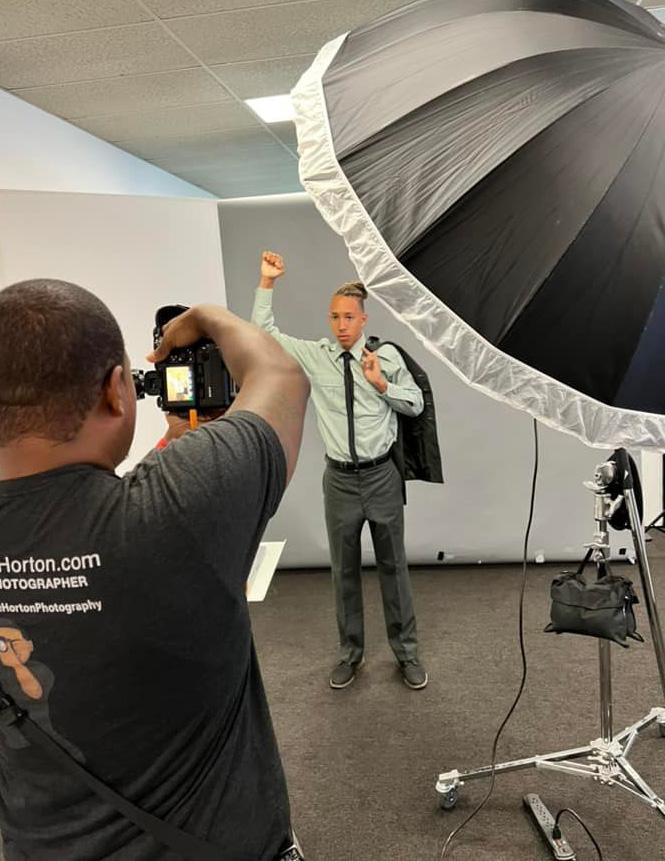
61
Healthy Screen Time Habits for Kids
Girl Scout Gold Award Project
Written by Haley Esbeck
“To whom it may concern, technology has become an integral part of our daily lives. As we become increasingly more reliant and absorbed in technology, more so in these challenging times, it is no surprise we will notice vision issues from excessive near work.” It was at one of my quarterly eye doctor appointments in the fall of 2021 that Dr. Bhola handed me a letter he sent out to all of his patients about the impact of technology on eyes. Since the start of the pandemic, Dr. Rahul Bhola, the Head of Ophthalmology at Children’s Hospital Orange County (CHOC), had been noticing an increase in kids with dry eyes, headaches, and blurry vision. He also noted that recent studies have shown that the prevalence of myopia, or nearsightedness, has jumped exponentially in the United States. This was all due to the increased amount of time spent on “near work,” things like looking at computer, phone, and tablet screens. These symptoms cause a condition called computer vision syndrome, which includes a combination of headaches, visual fatigue, blurry vision, and dry eyes.
Since I have dealt with various eye conditions throughout my life, this information was not surprisingly new to me; some of my previous doctors had warned me about the impacts of
using iPads in schools when I was in third grade. When Dr. Bhola mentioned that he wished he could spread this message to more people outside of his clinic, my imagination immediately sparked; it would be perfect for my Gold Award.
I have been a Girl Scout since kindergarten and have always looked forward to completing the Gold Award, which is the highest award a Girl Scout can receive and is equivalent to the Eagle Scout Project for Boy Scouts. The goal of the Gold Award is to make a lasting change in the world by fixing a problem in the community. I wanted to address the problem of computer vision syndrome and the impact of screen time on kids’ eyes, so I created the project Healthy Screen Time Habits for Kids with the goal to encourage healthy habits in youth for a lifetime of good vision. I partnered with Dr. Bhola at CHOC, as well as various mentors in my community in order to create a social media campaign, an introductory video to be shown at presentations to various groups in my community, and a meeting guide for groups to continue to use after my project is completed. There was a lot of research behind the message of my project, including interviews of experts. One was with Lead Orthoptist Jonathan Russell from CHOC, who provided a doctor’s perspective on this issue and the importance of spreading awareness about it. He described one of the worst cases he had seen in the clinic:
62
“We had one little boy who was playing on the computer all day and at night he continued to play rather than sleeping, so he presented and unfortunately that led to a surgery to make his eye straight. It was successful and it was resolved, but it was very, very traumatic for the patient and the parents.” It is concerning that exhausting our eyes looking at screens can lead to such a big impact on our lives. While this is a case of extreme prolonged use of screens, just the amount of time we spend on screens normally can lead to the harmful symptoms of computer vision syndrome. This is why the implementation of the 5 healthy screen time habits can be so beneficial.
As Mr. Russell put it, “It can impact all areas of your life, but most importantly is the learning. If you have dry eyes, blurry vision and headaches, you aren’t going to be interested in reading or participating in class activities because you can’t see very well. … This is a serious problem, but thankfully it is reversible with just some healthy habits.”
It is especially important to build these habits as kids or when you first learn how to use technology because it will impact your relationship with technology for the rest of your life. In a survey I conducted of about 300 parents in the United States, it showed that as kids get older, their parents feel more uncomfortable with the amount of time they spend on screens. If kids learn healthy habits when they are young, they will learn to self regulate as well as be more conscious and in control of their use of screens. Then parents can feel comfortable with their kids’ screen time and everyone can be healthier and happier.
For more resources and information on this project and how you can help spread awareness, follow the project on social media or see the mini website. Thank you!

Those habits for kids include:
1. Limit recreational screen time to two hours a day.
2. Avoid using screens in the car, while eating, and during the hour before bedtime.
3. Hold screens an arm’s length away and make sure to blink regularly.
4. Keep an open dialogue with parents or guardians about your screen use and activity.

5. Get off screens! Go outside, be creative, and spend time with people.
@healthyscreentimehabits linktr.ee/ healthyscreentimehabits
63
On the Theme
Julianna Kolb, San Dieguito Academy ‘24

When I hear the phrase, “Love, Not Hate,” there are many things that I think of. From my school, to my everyday life, we practice this saying.
believe that the
At many schools to this day, there are cliques; separate powers branching from
a whole in spite of each other. There was this one sunny sickle day in fifth grade, I have stuck in my mind. My ‘friends’ were pushing me around and yelling in my face. Whispering things behind my back and never letting me join them anywhere in public. I can’t help but think, were they ashamed? Ashamed of another human being in their group? Just because of the way I dressed? Or the positivity I spread? It’s only now that I realize, some people still resort to their cliques, their roots.
64
I
most important thing is the community we create on campus.
Do you remember when everything was simple? When there were stories of fairylands and not gossip? When curse words were a secret, never to be spoken of? When life was about making up silly stories and not making out?
There’s this picture of myself at my seventh birthday party that I have forever engraved in my memory. I was wearing the brightest dress with thick chocolate cake smeared all down my face. We were playing games outside and I was trying my hardest to win against all the guys.
That wasn’t that long ago, yet it feels like a lifetime.
Love, not hate. I love all of the people I have met in my life, yet some people hate me for being myself. I guess that’s just the way that it will remain since I will never change the way that I behave for another.
Now back to the big picture. On campus we create a welcoming and accepting culture that radiates off of our walls. Lately, there have been people challenging our culture, whether it be a student or not, that is not okay. We have done too much and connected with too many people to throw it all away now.
At the end of the day, it’s down to, “Love, Not Hate.” There are many things that I don’t know about this world yet. Don’t understand, can’t understand.
I’ve had my fair share of people who have really hurt me in my lifetime. People who I should not have forgiven and others that I’m close with now.

Hate is a dark, poisonous cloud. It’s always there, present in the air, resonating on the tips of our tongues. Though it looks like there’s nothing there, hate stands on your shoulder as though fantasizing the devil itself. With anger, it draws closer. Clinging to the fact that one day it will be used to hurt someone. Though I don’t let it. Sure, I hate my homework and I hate doing my chores, but I will never hate a person.
Maybe it’s something with the look in their eyes, their body language when you hurt a friend. That pain, no matter how big or small, sticks with a person. Clawing at their skin, trying to poison their bones like a sick and twisted joke.
We like to misuse that word. Pretending we hate a person just because of the way they are. It’s wrong. Wrong to judge someone before you know their character; their background.
LOVE NOT HATE

65
Yet I know this to be true: hate does not exist. Disliking of people, absolutely, but hate? It’s simply not possible for me.
So I choose love. I will always choose love over hate.
Planting the Seeds for a Peaceful World
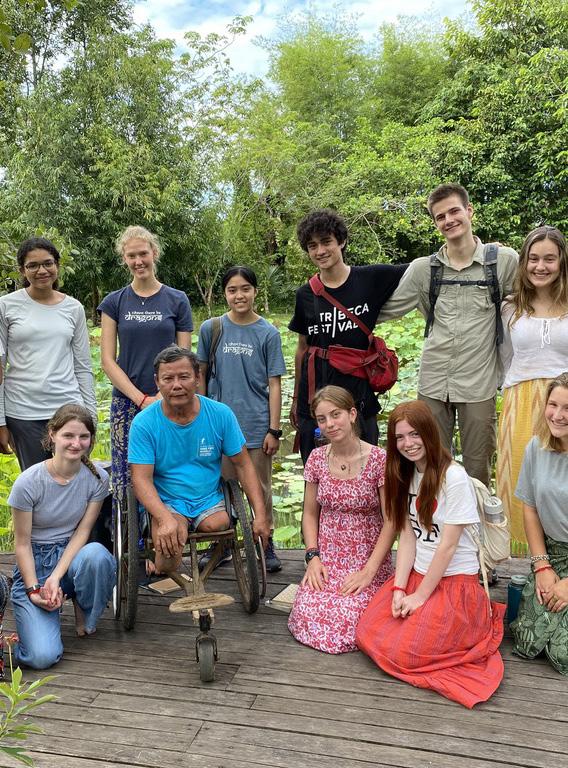
As the afternoon humidity begins to invade the peaceful climate of the morning, the entirety of our group makes a hard right down an unseen corridor of the Metta Karuna Reflection Center. The agonizing sensation of sweat pooling beneath the confines of my skirt increases as we approach a large discussion room. Within the walls of Metta (mercy) Karuna (lovingkindness) Reflection Center, Sister Denise and Tun Channareth work strenuously alongside the International Campaign to Ban Landmines to provide a safe environment for refugees to raise awareness of the issues faced beyond the walls of this center. Today, we would be having an indepth discussion with Tun Channareth–or Reth as we came to know him–himself. Fiddling with the legs that allowed me to travel thousands of miles to Siem Reap, I watched as a man without such luxuries pushed the wheels of his chair forward to enter the room. Movement in the room reached a standstill as Reth unveiled his compelling oration. Every nuance in his speech indicated extreme earnestness. “As humans, we all have landmines in our hearts. But also a flower! What we need is to eliminate the landmine and let the flower bloom. Do you know when we let this flower bloom? When we help and do something for others.” Sitting in that large discussion room, surrounded by a growing pool of sweat, instrumental principles of peacemaking were instilled in me. Through Reth, I gained the wisdom to understand that peace is a path that must be consciously chosen by humanity. “It means compassion without concession, and peace without bowing to injustice.” For the tree of peace to blossom in the place of landmines, loving-kindness must be embraced.
Tun Channareth (Reth) served as a resistance soldier on a mission near the Thai-Cambodian border in 1982 after the Khmer Rouge forced him and his family to leave Phnom Penh. While serving as a young soldier, Reth stepped on a landmine, which resulted in the amputation of both legs. Fifteen years after this, Reth accepted the Nobel Peace Prize on behalf of the International Campaign to Ban Landmines, further signifying his experience, commitment, & activism surrounding creating a landminefree world. Today, Reth lives with his wife and children in Siem Reap, Cambodia, designing wheelchairs and working with disabled children while still working as a traveling ambassador for the ICBL.
Written by Ainsley Cobb
66
Final Words
Global Vantage aims to unite perspectives and people from all walks of life, and there is nothing more innate or human than love. Love can be found everywhere in this world, whether it be for a person, a place, an idea, or community. Care and empathy are what unite us, and it’s more important than ever to remember that. This theme was chosen at a time when people were more divided than ever. Throughout the pandemic, there was a lack of understanding for one another and an influx of prejudice. It was for this reason that we selected Love (Not Hate) as our focus.
This magazine issue itself was a labor of love, taking us a year and a half to finalize. As Global Vantage looks toward the future, we want to focus on values, like love, that keep us unified against hate and intolerance.
“The three grand essentials of happiness are: something to do, someone to love, and something to hope for.”
—Alexander Chalmers (1759-1834)

Recent Events
Global Vantage won $750 in the Pacific Ridge School Service Learning Grant Competiton which will be donated to KGSA to educate a girl for a year.

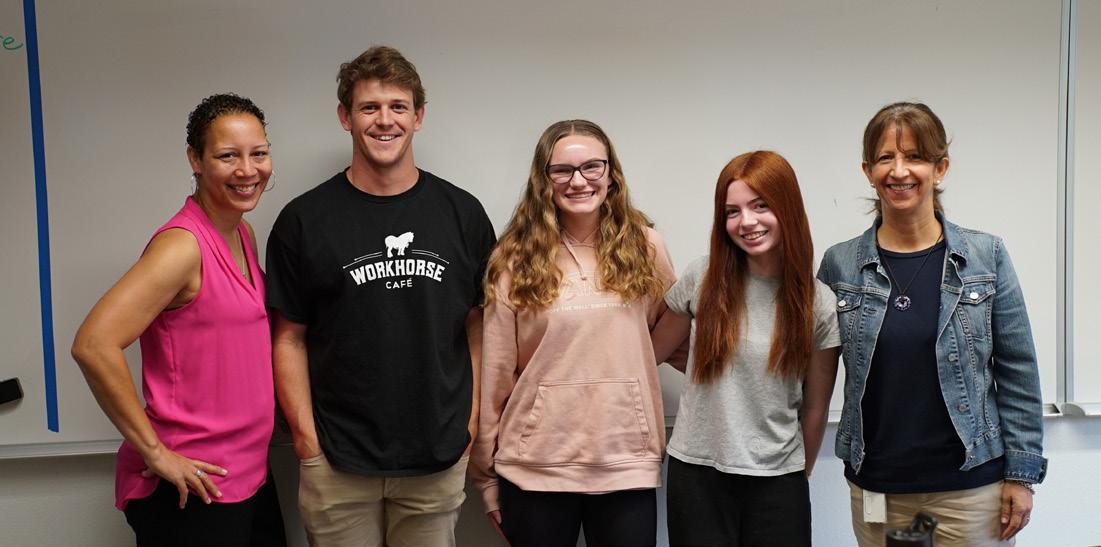

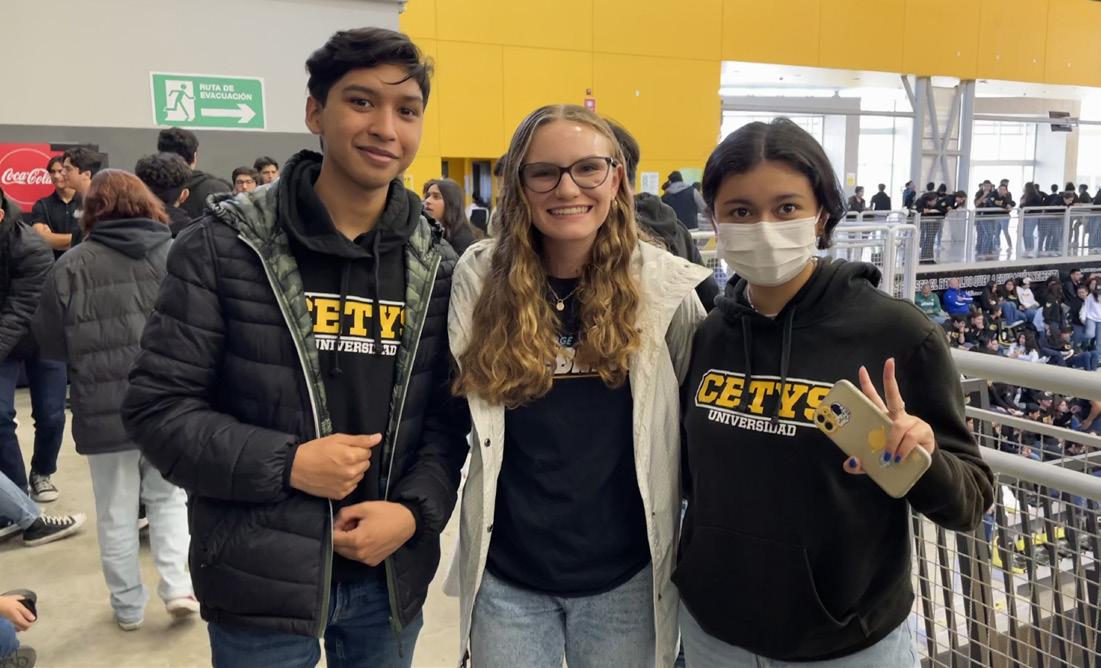

Disclaimer: Any political views represented in these articles belong to the author and do not reflect the opinions and beliefs of Global Vantage or its affiliates. We do not write or solicit articles to spread our personal religious, political, or social beliefs. Our goal is to share experiences and viewpoints across cultural and physical borders to spread awareness about global issues.
Global Vantage Staff
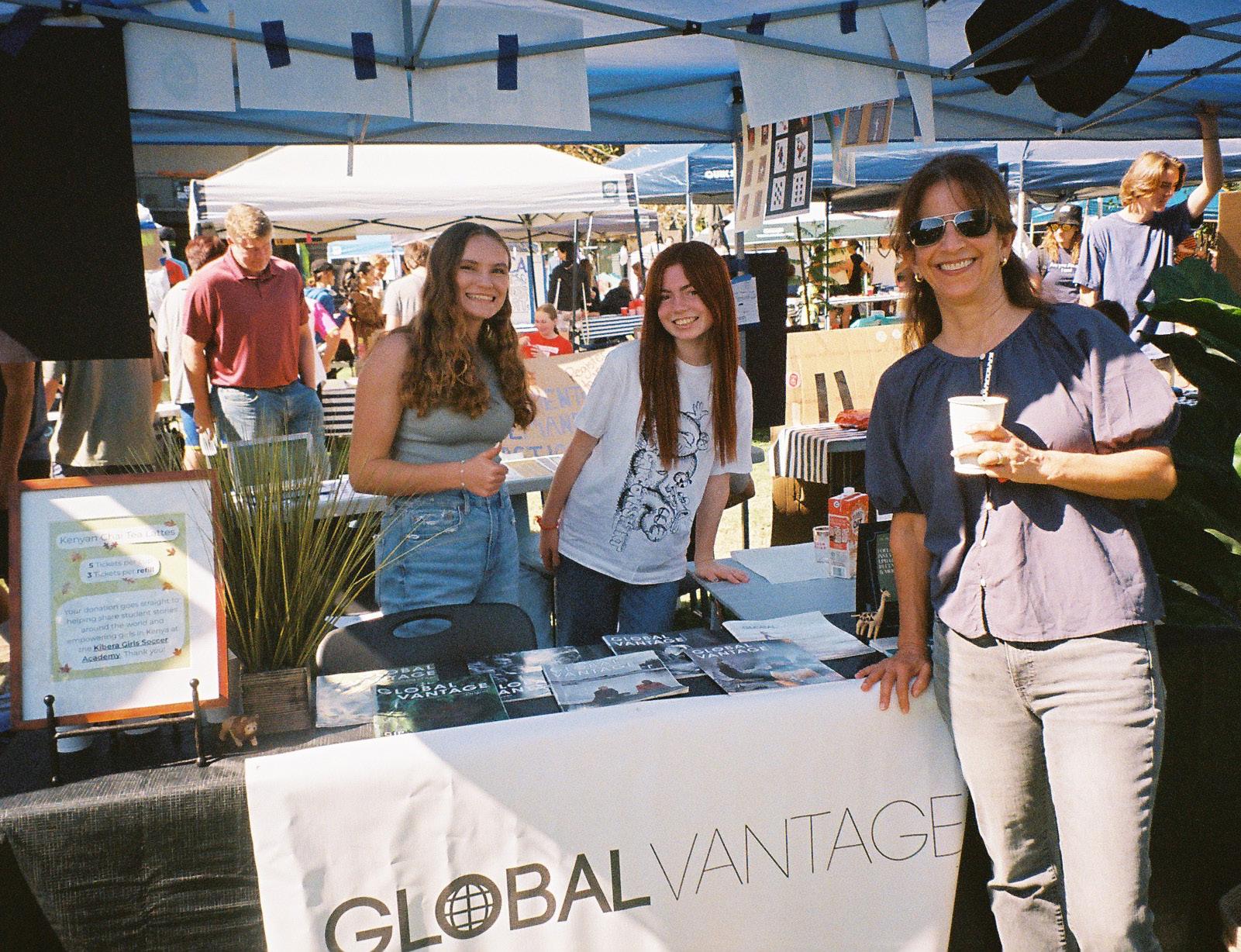
Ainsley Cobb (‘24), Co-Editor in Chief
Haley Esbeck (‘24), Co-Editor in Chief
Sadie Stern (‘24), Editor & HR Manager
Kylie Martindale (‘24), Editor & Contributor
Ruthie King (‘24), Contributor
Gabriela Nava-Carpizo, Group Advisor
Germaine Jackson, Head of Service Learning
See our website or Instagram to for more events and updates!
68
Global Vantage reconnected with alum Jack Merrifield, Director Teka and Dalifa visited from KGSA; Haley met Emma and Carlos from partner school CETYS; and Fall Fest was a success!
LOVE NOT HATE GLOBAL VANTAGE
Global Vantage is an institution that seeks to spread stories across cultural and physical borders in order to raise awareness of global issues.
We are partnered with the Kibera Girls Soccer Academy in Kibera, Kenya as well as the CETYS University in Tijuana, México, who contribute photos and articles to the Global Vantage Magazine. Students are encouraged to reach out to their community and their colleagues to get a wide variety of pieces. We focus on the diversity of our stories and the creation of a magazine that is worth reading.
Anyone who wishes to use materials in Global Vantage, either in print or online, may do so at no cost and with proper citation. All materials can be used for educational purposes, and none may be used for profit not benefitting the three-school collaboration.
Colophon
globalvantagemagazine.com | @globalvantage
kgsafoundation.org | cetys.mx
Issue Sixteen of Global Vantage was created using Adobe InDesign on an Apple MacBook Air computer. Cover photo taken by a KGSA student. All fonts included are Acumin Pro Regular or Bold and Source Serif Pro Black. All 70 pages of this magazine are printed on [paper, gloss, stitch, color type]. 200 copies have been produced at the cost of $2000.
The magazine template was downloaded from stock.adobe.com and is titled “Pastel Magazine Layout.” For layout edits and credits please see the list of Global Vantage Staff on page 68.
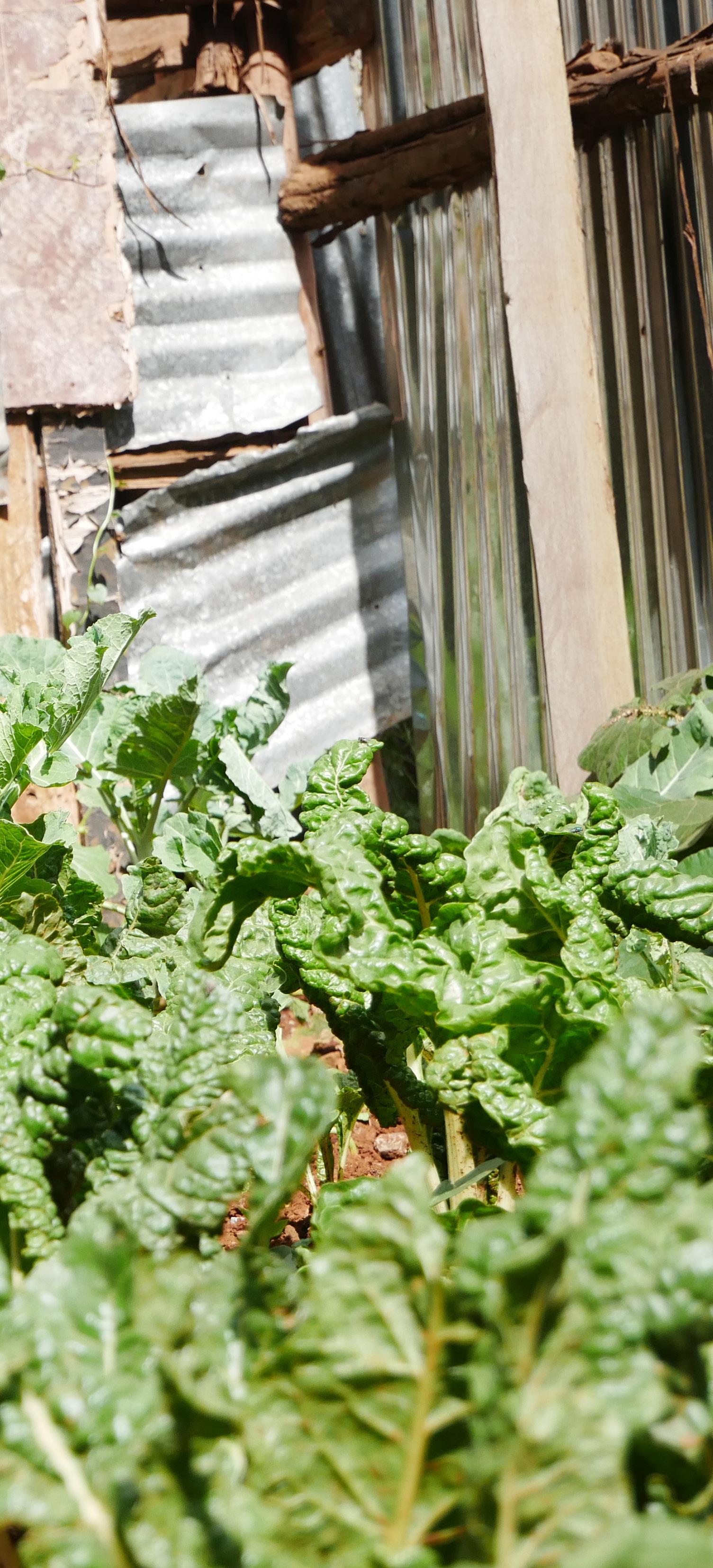



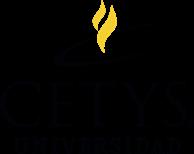


 Abigael Dete
Abigael Dete















 Striker Vinley Kanini
Striker Vinley Kanini







 Yvonna Saboke Mishel Atsieno
Zakia Ali
Yvonna Saboke Mishel Atsieno
Zakia Ali








 by KOKOPELI
by KOKOPELI




 Photographs by María Teresa Fernandez, interviewed by Ruthie King, edited for clarity by Haley Esbeck
Photographs by María Teresa Fernandez, interviewed by Ruthie King, edited for clarity by Haley Esbeck





 Image captured by Ahmed Akacha and acquired by Global Vantage through Pexels, a platform that empowers creators by providing completely free stock photos under the Pexels license.
Image captured by Ahmed Akacha and acquired by Global Vantage through Pexels, a platform that empowers creators by providing completely free stock photos under the Pexels license.















































